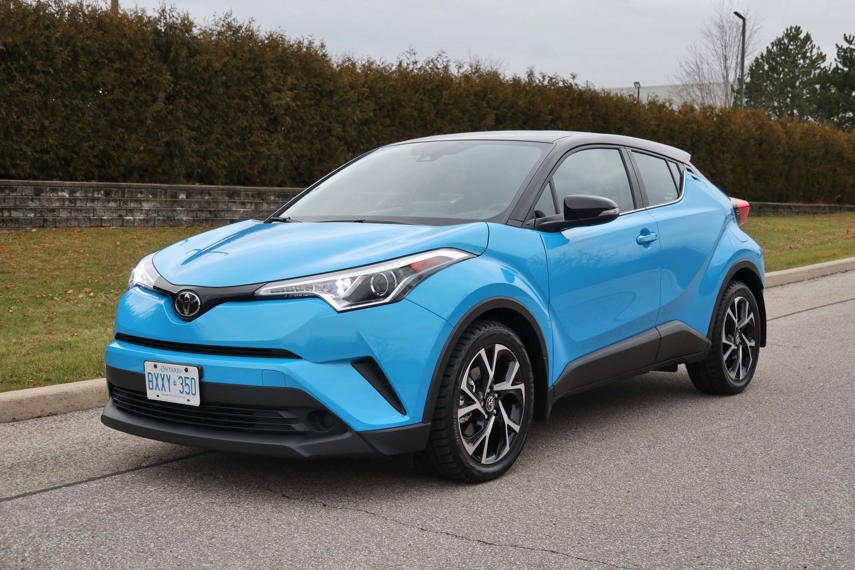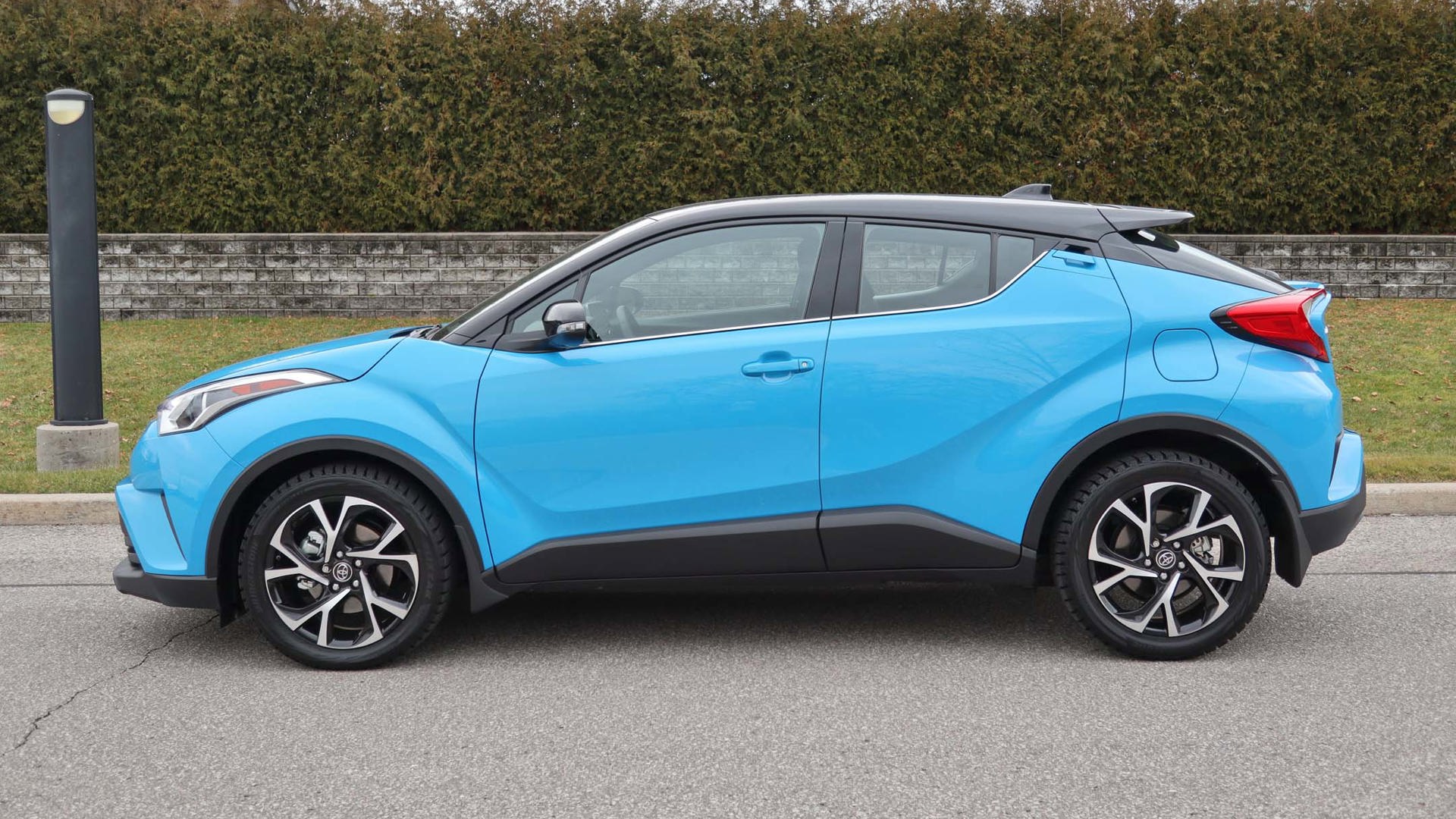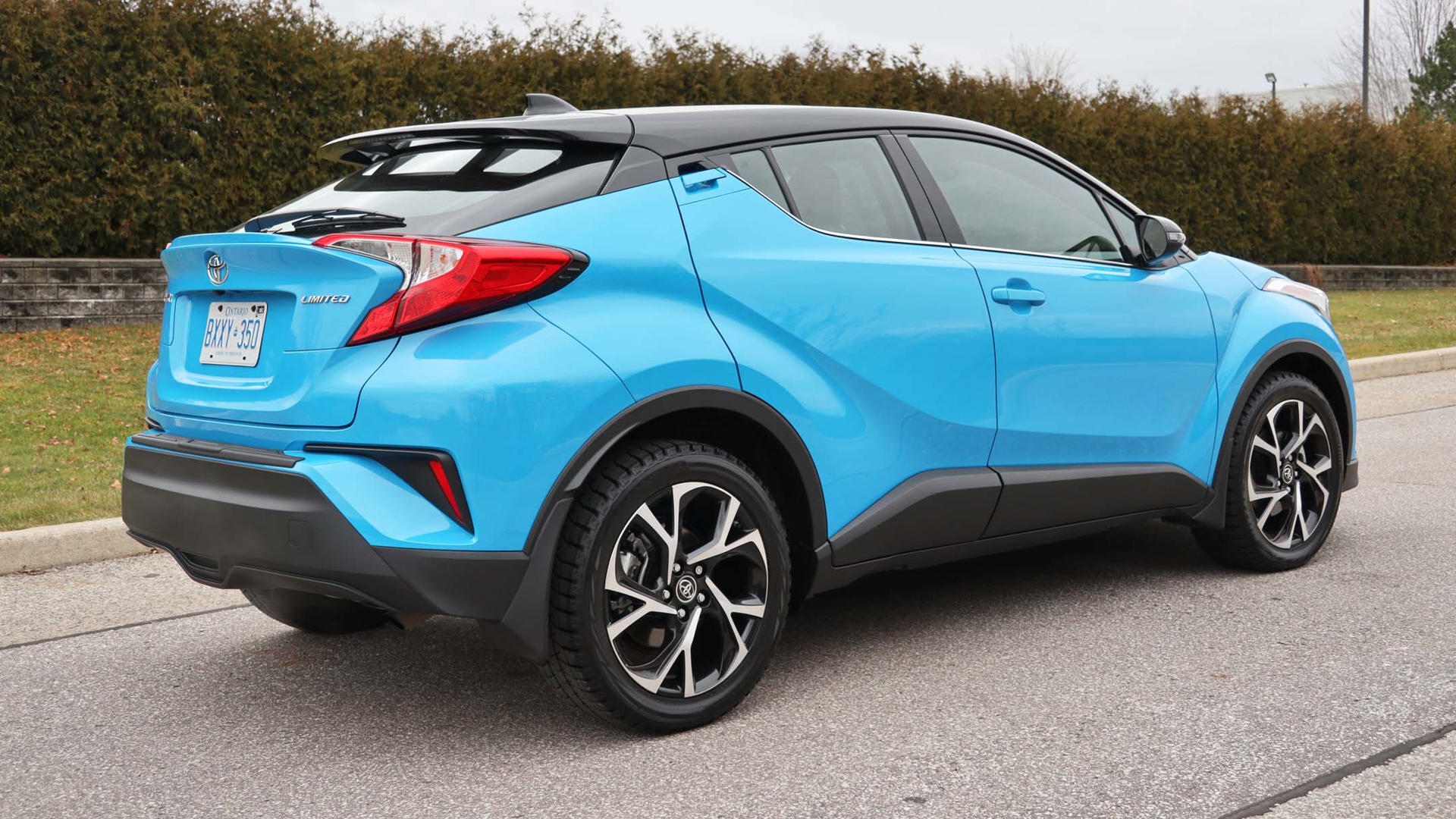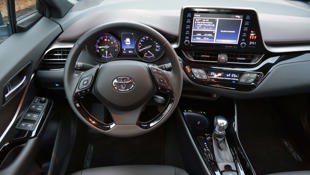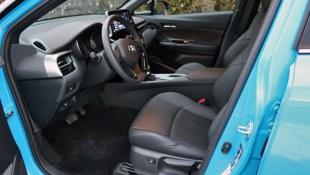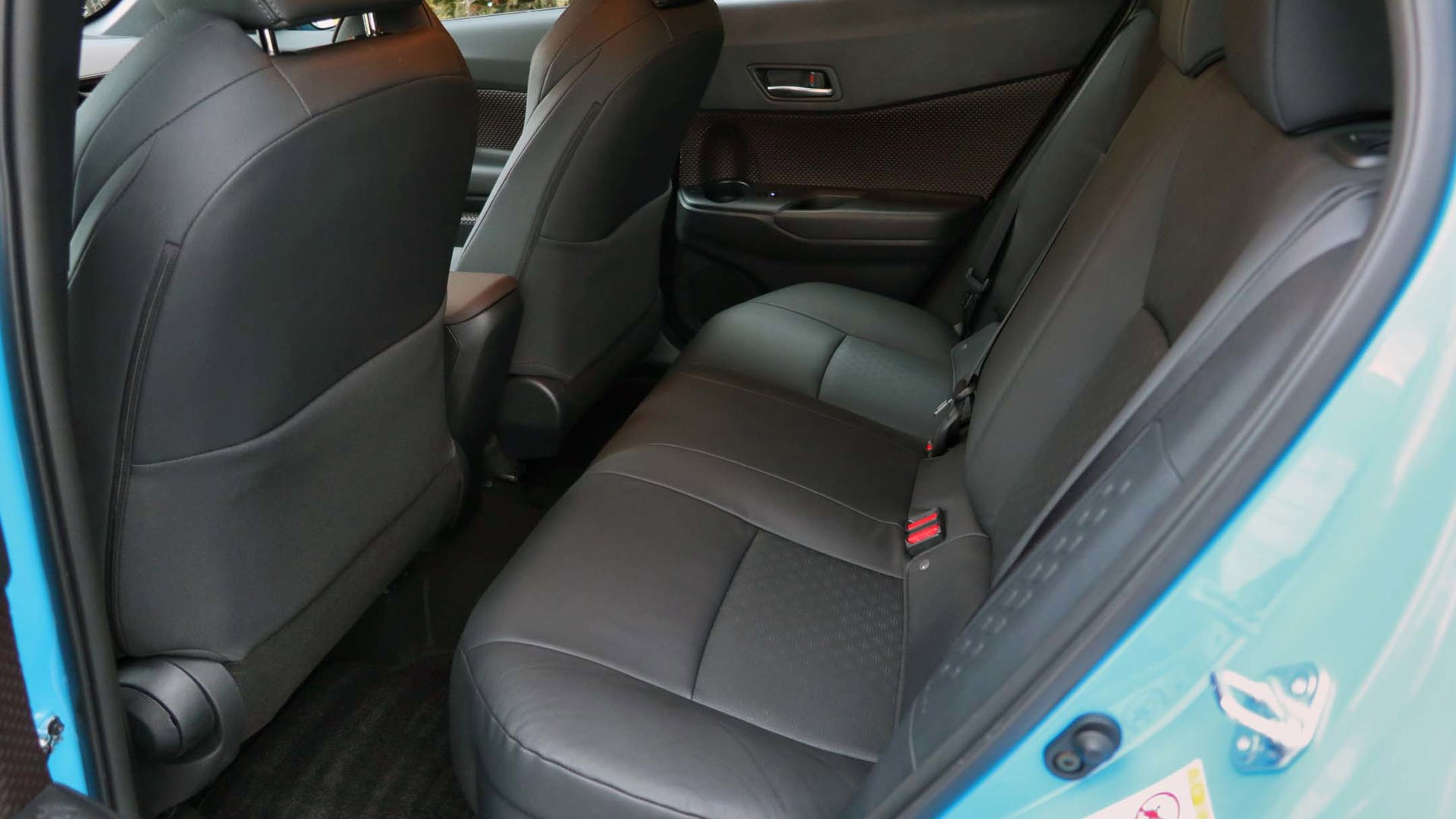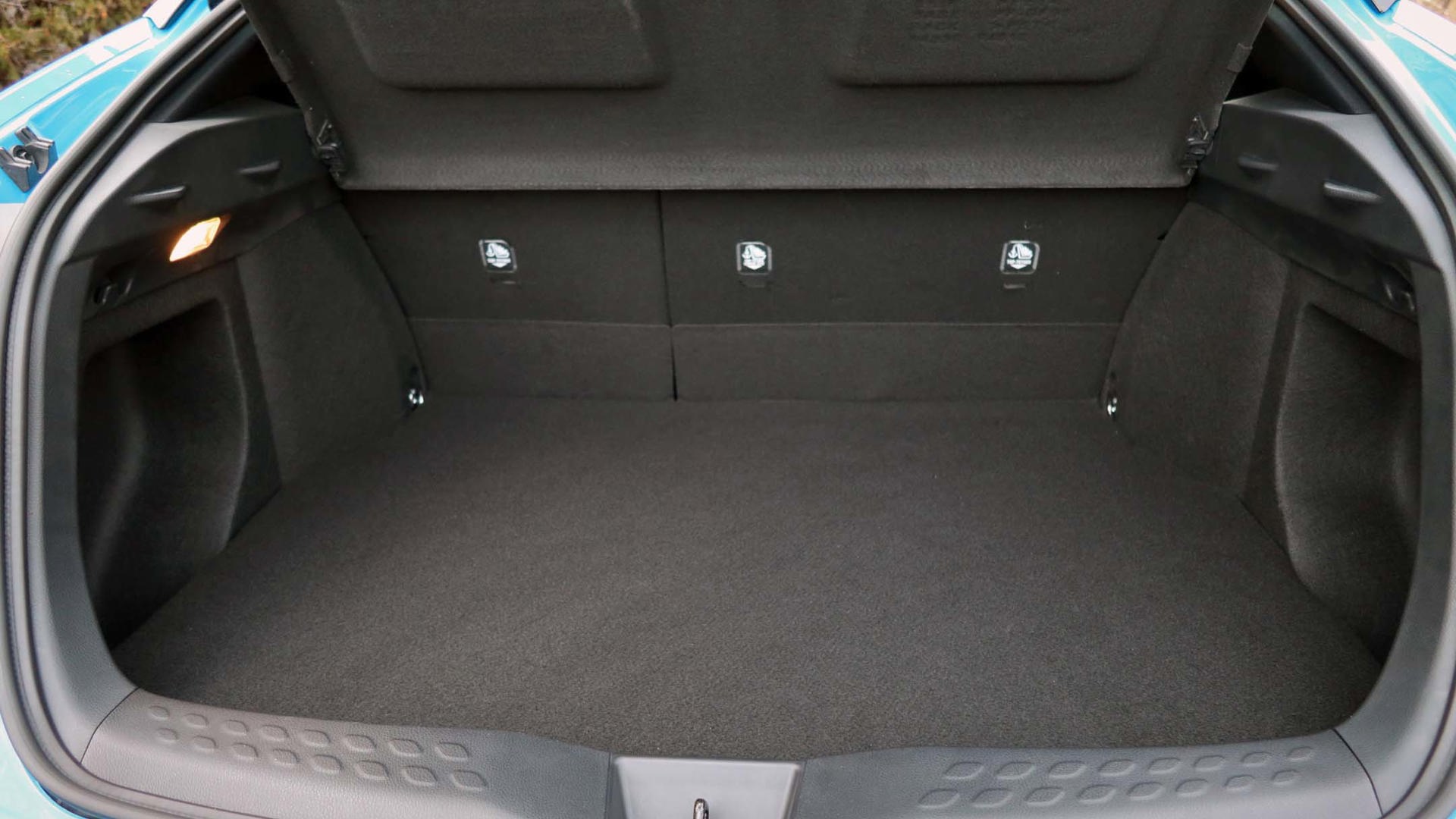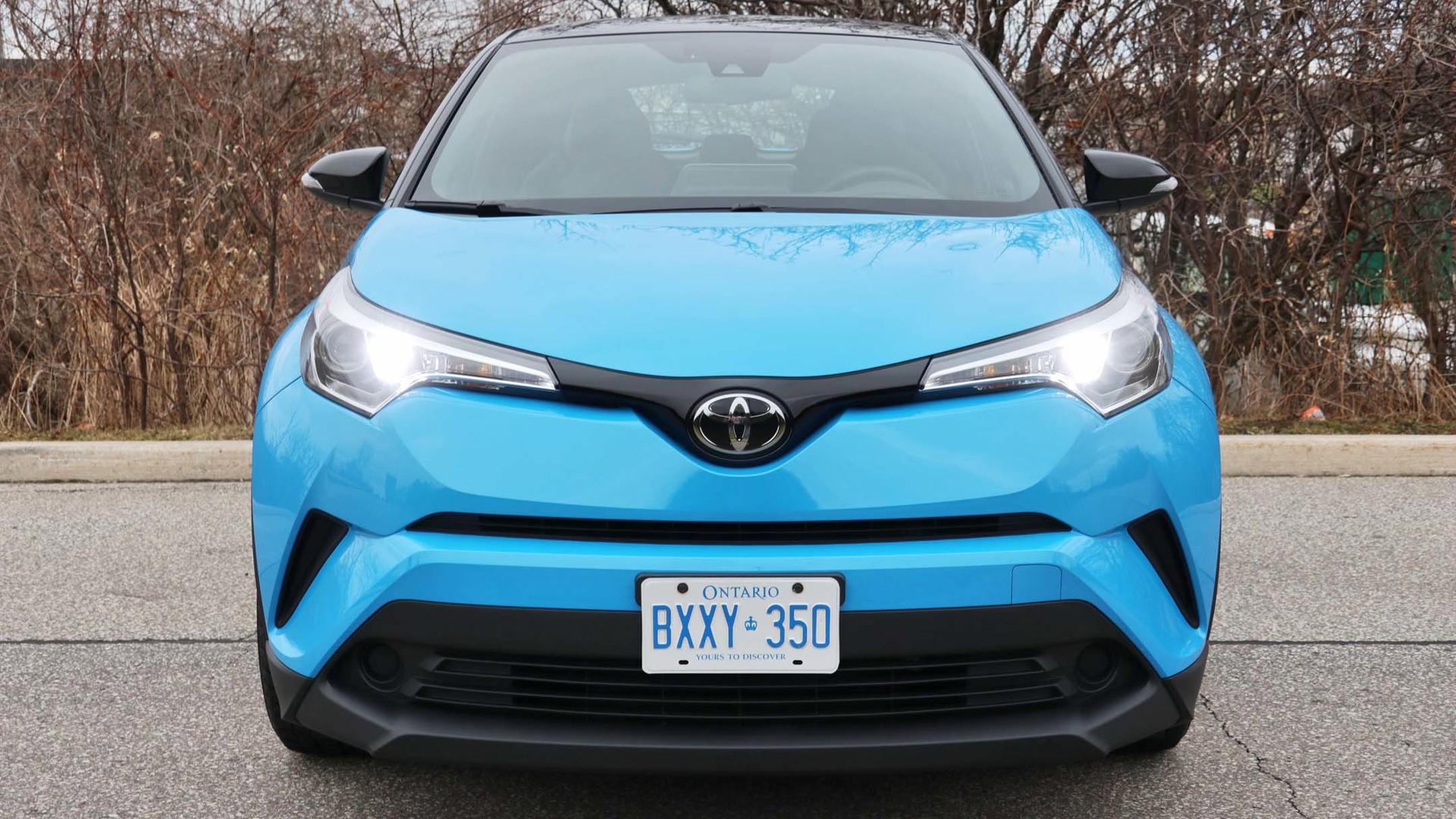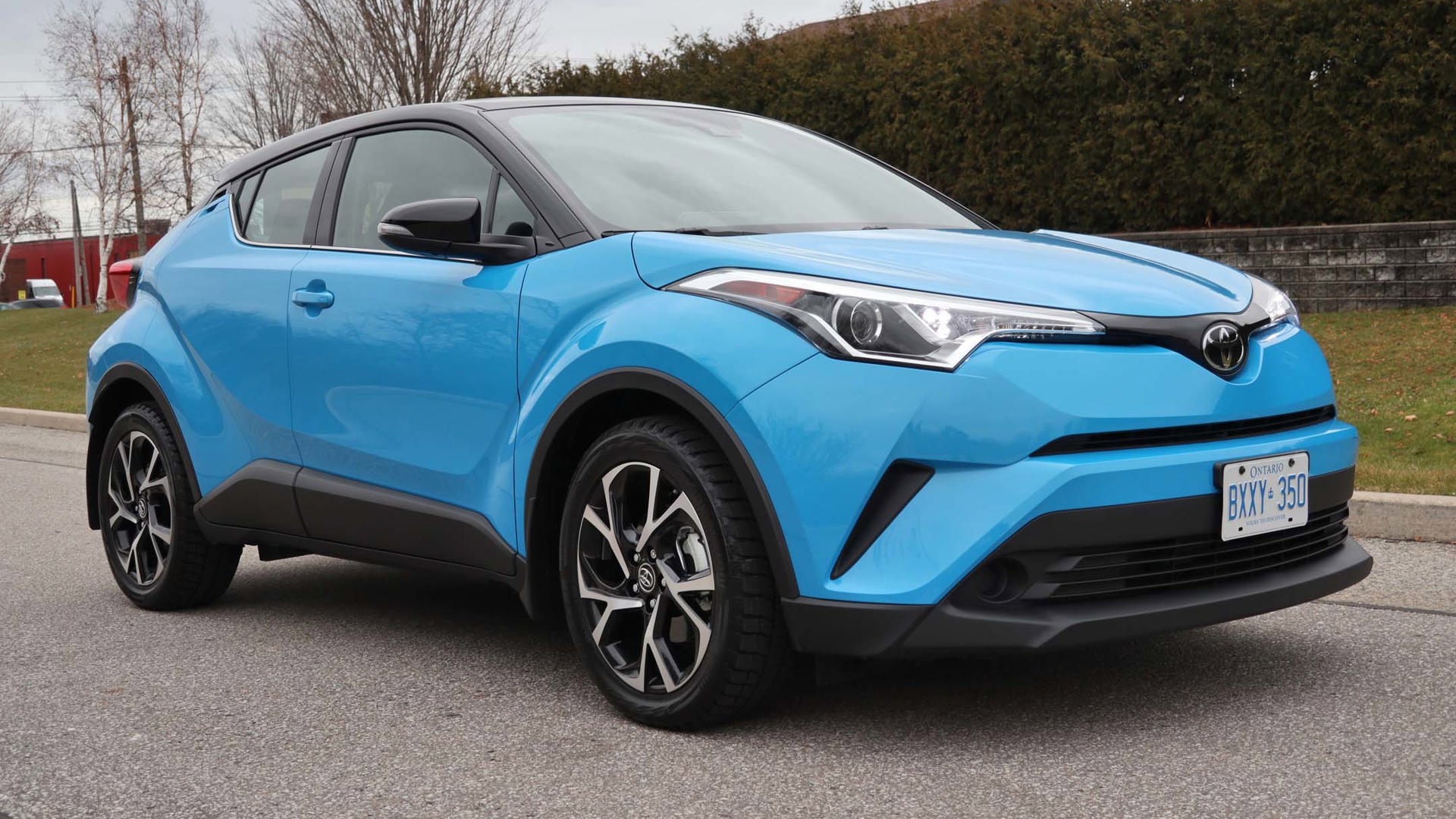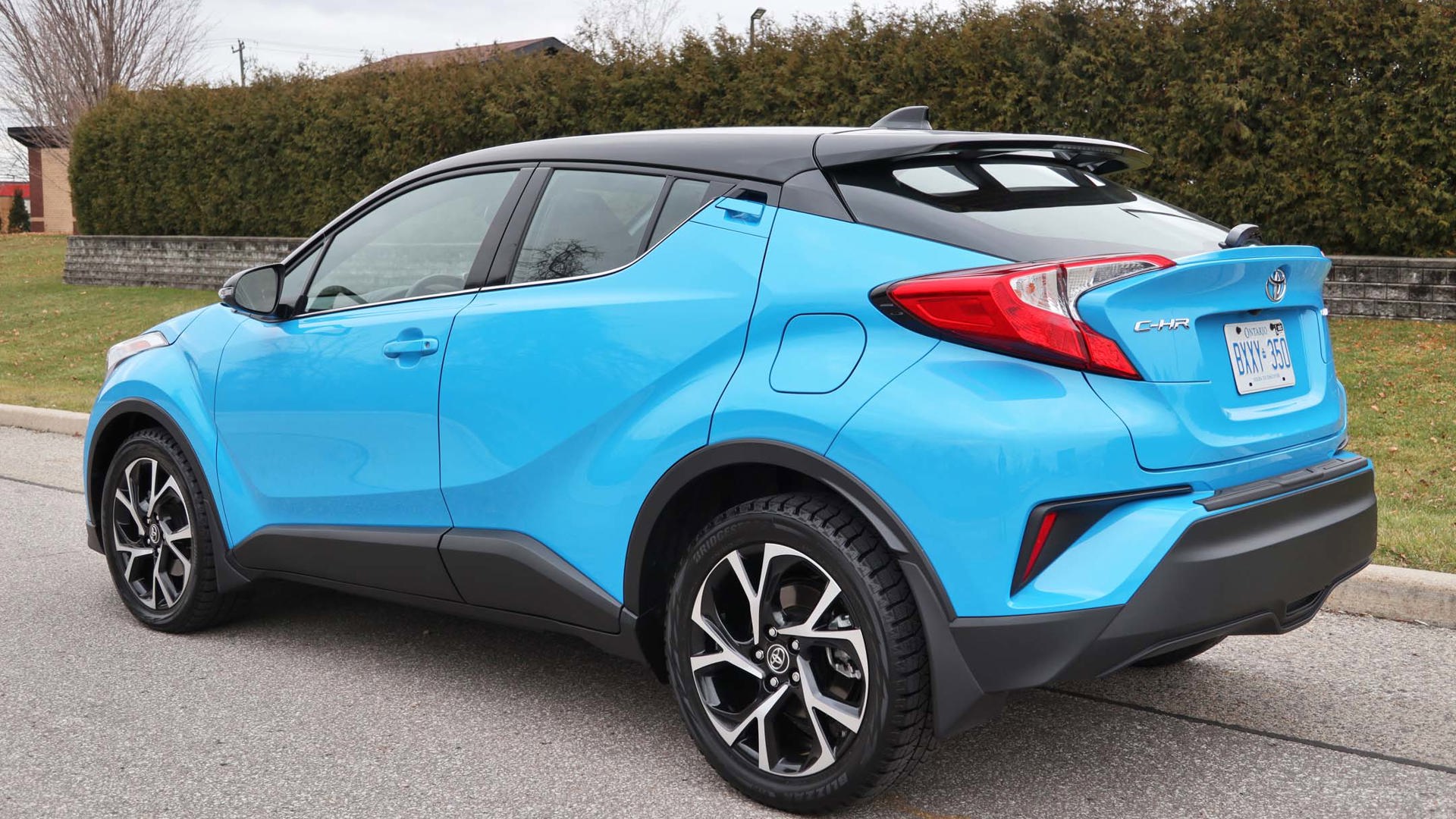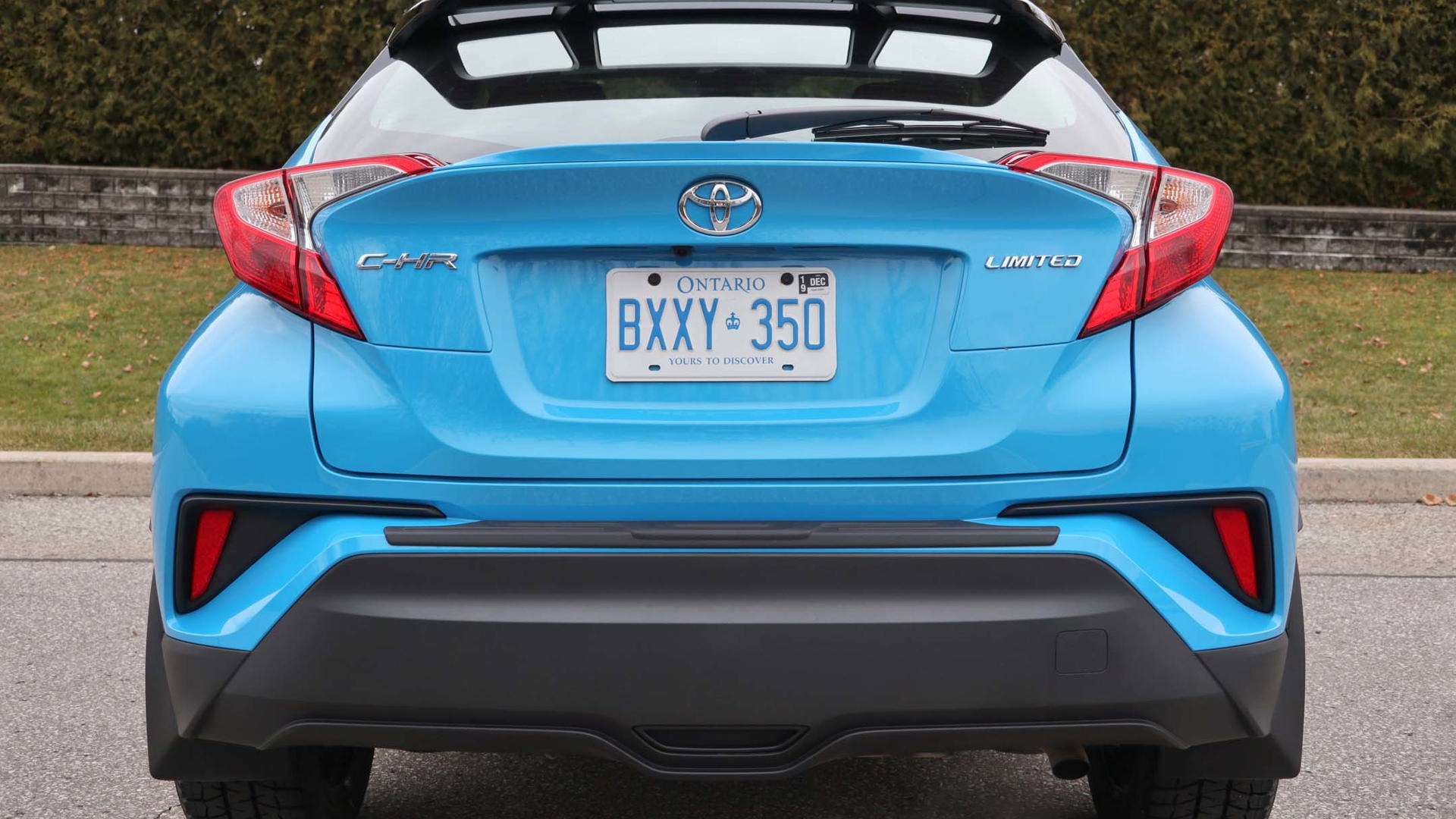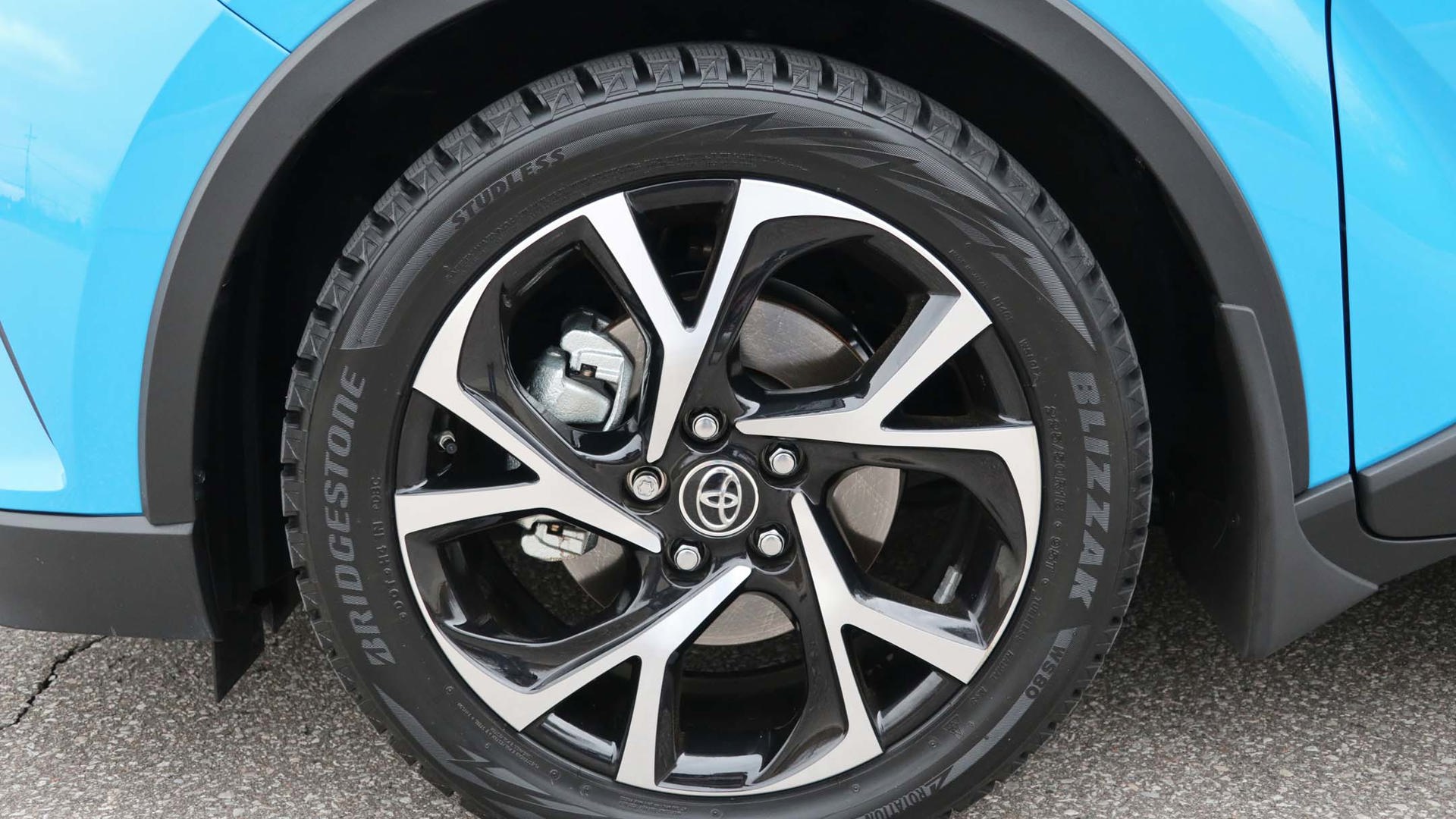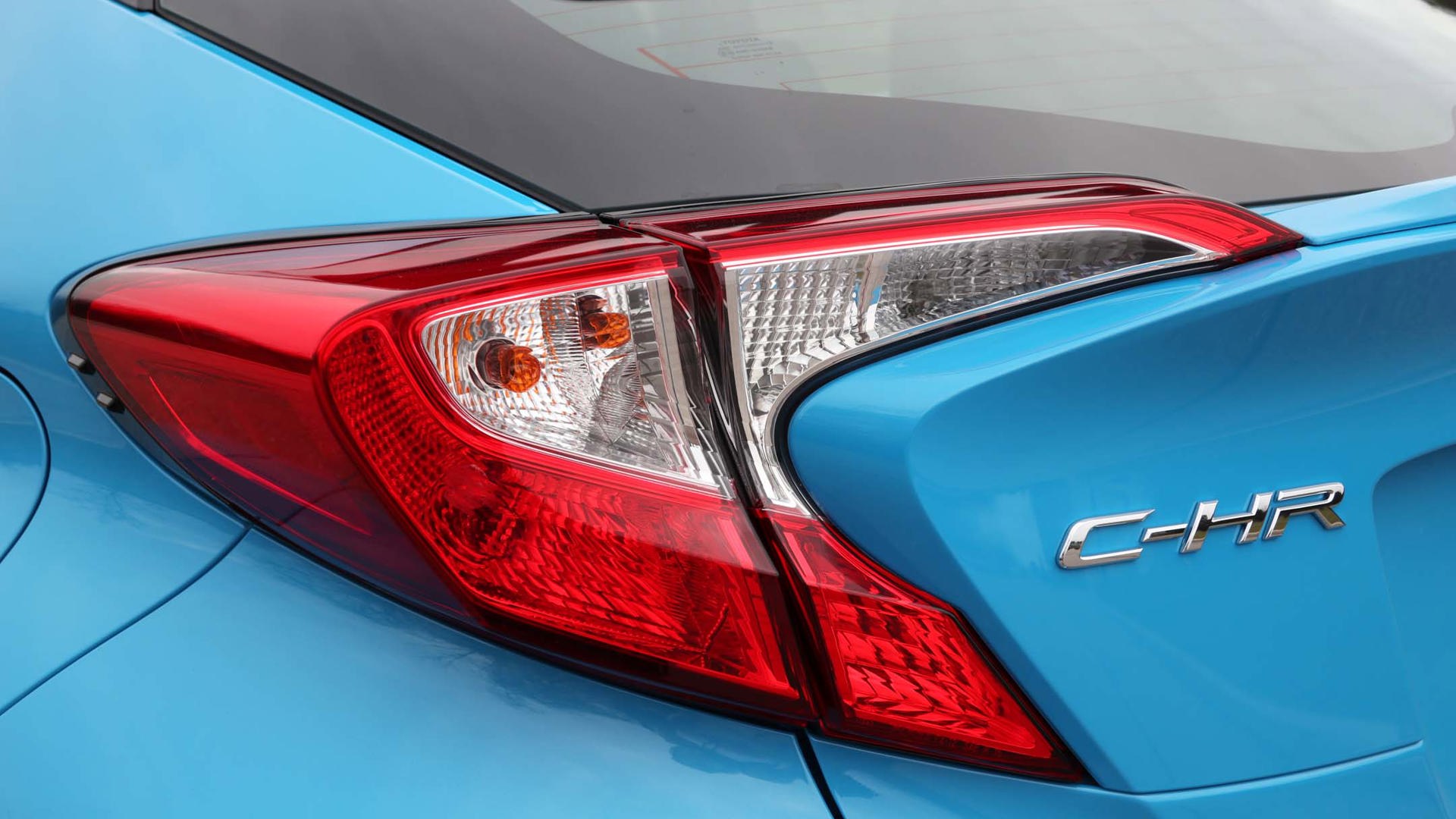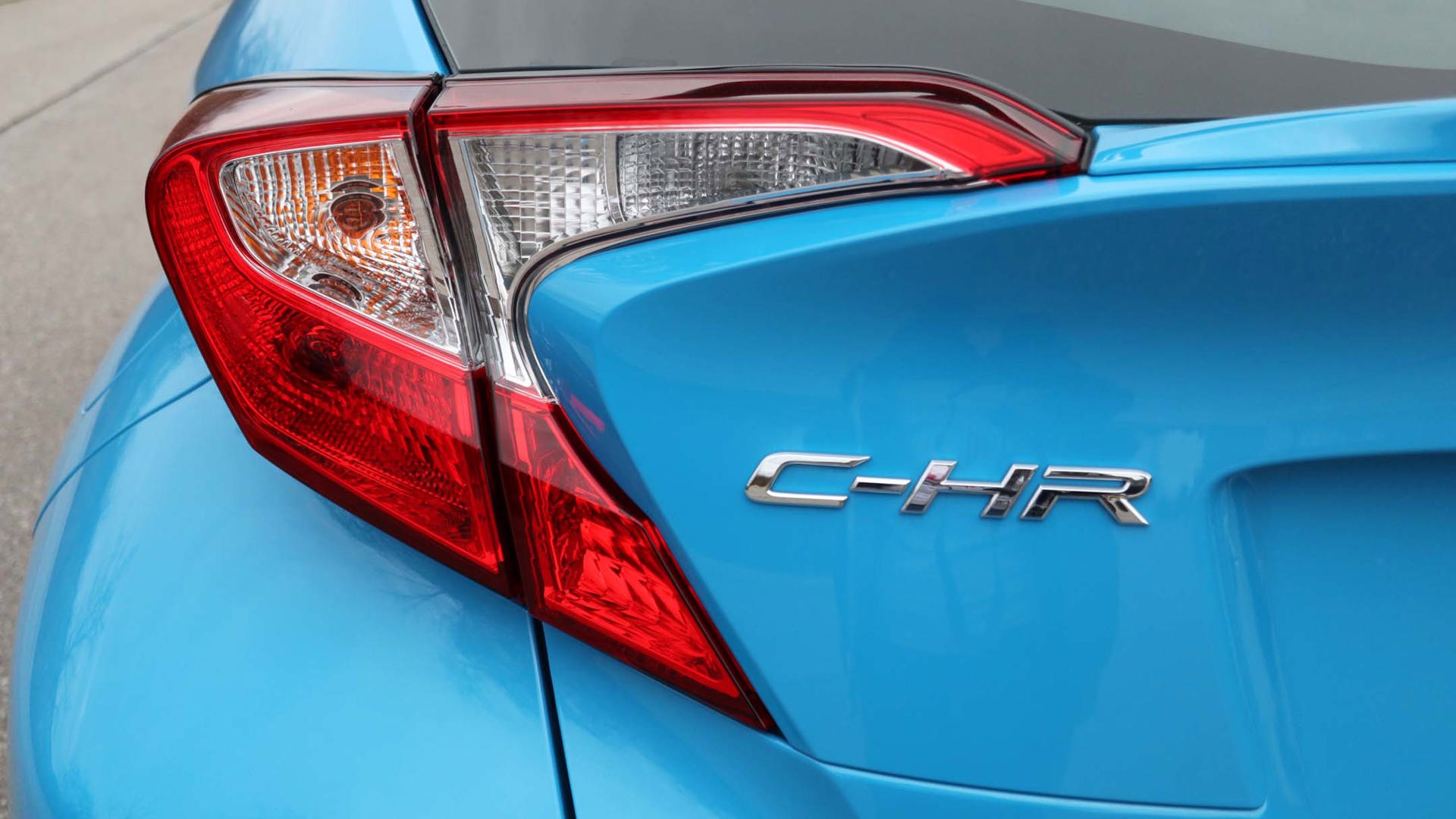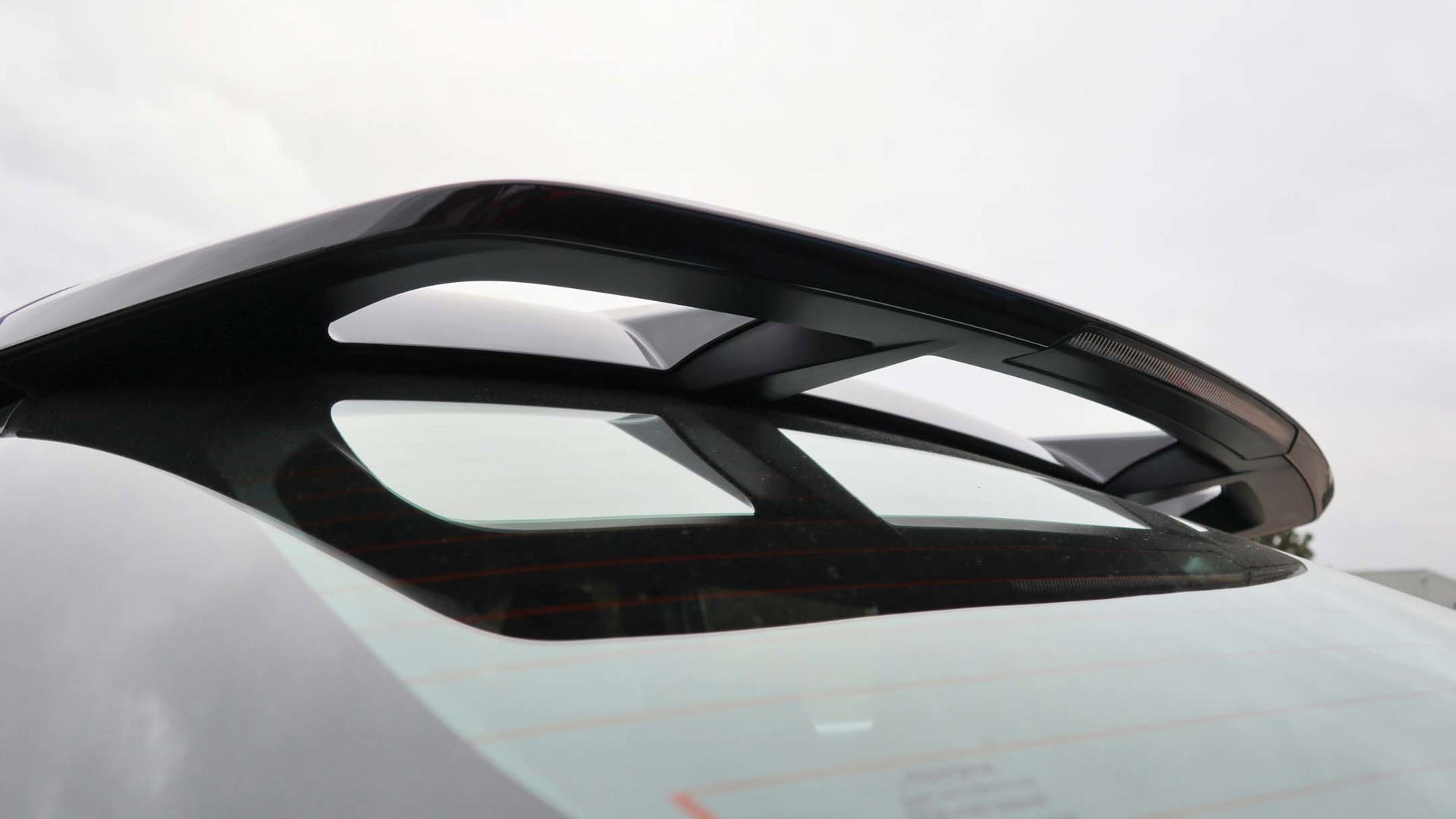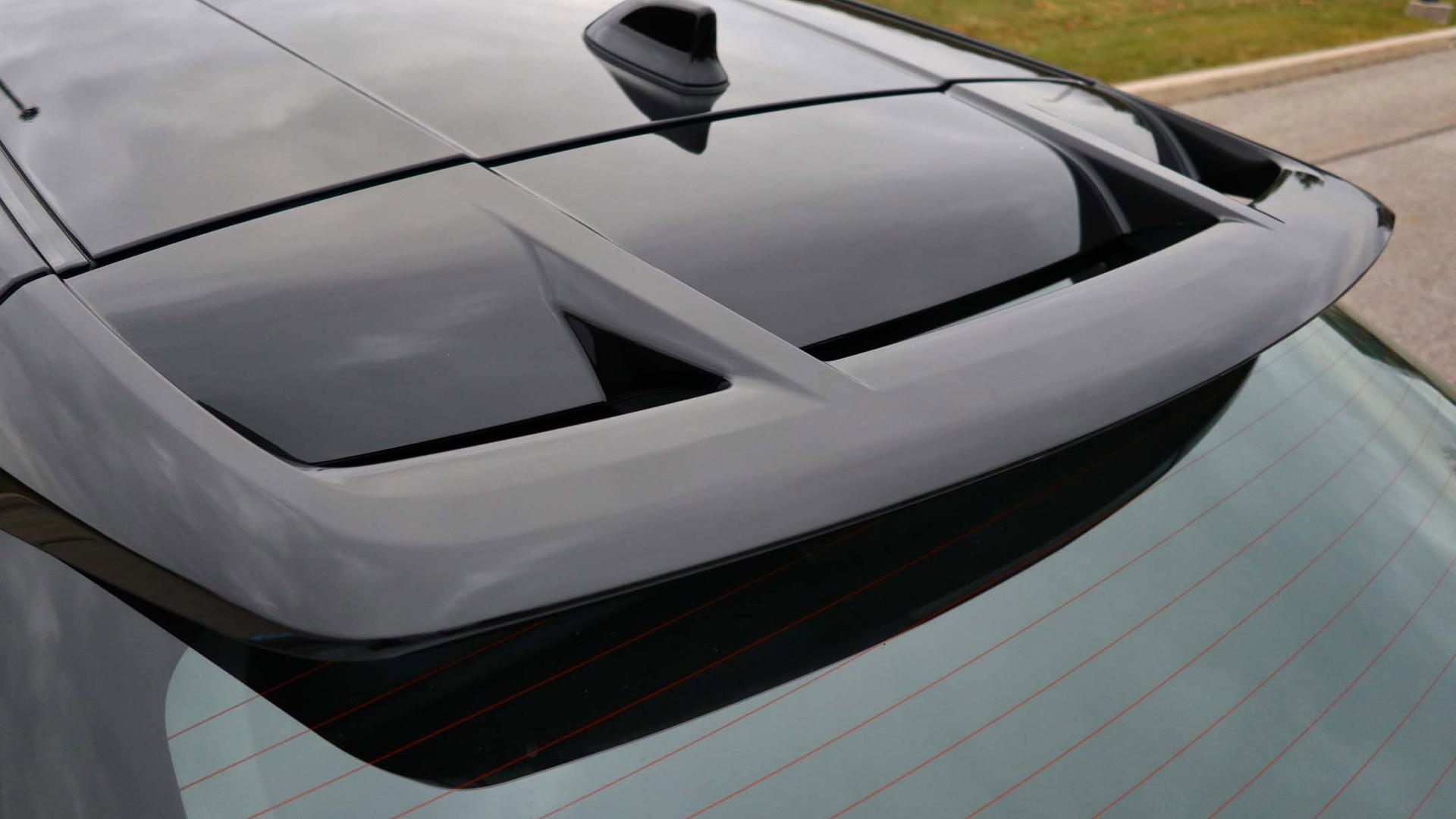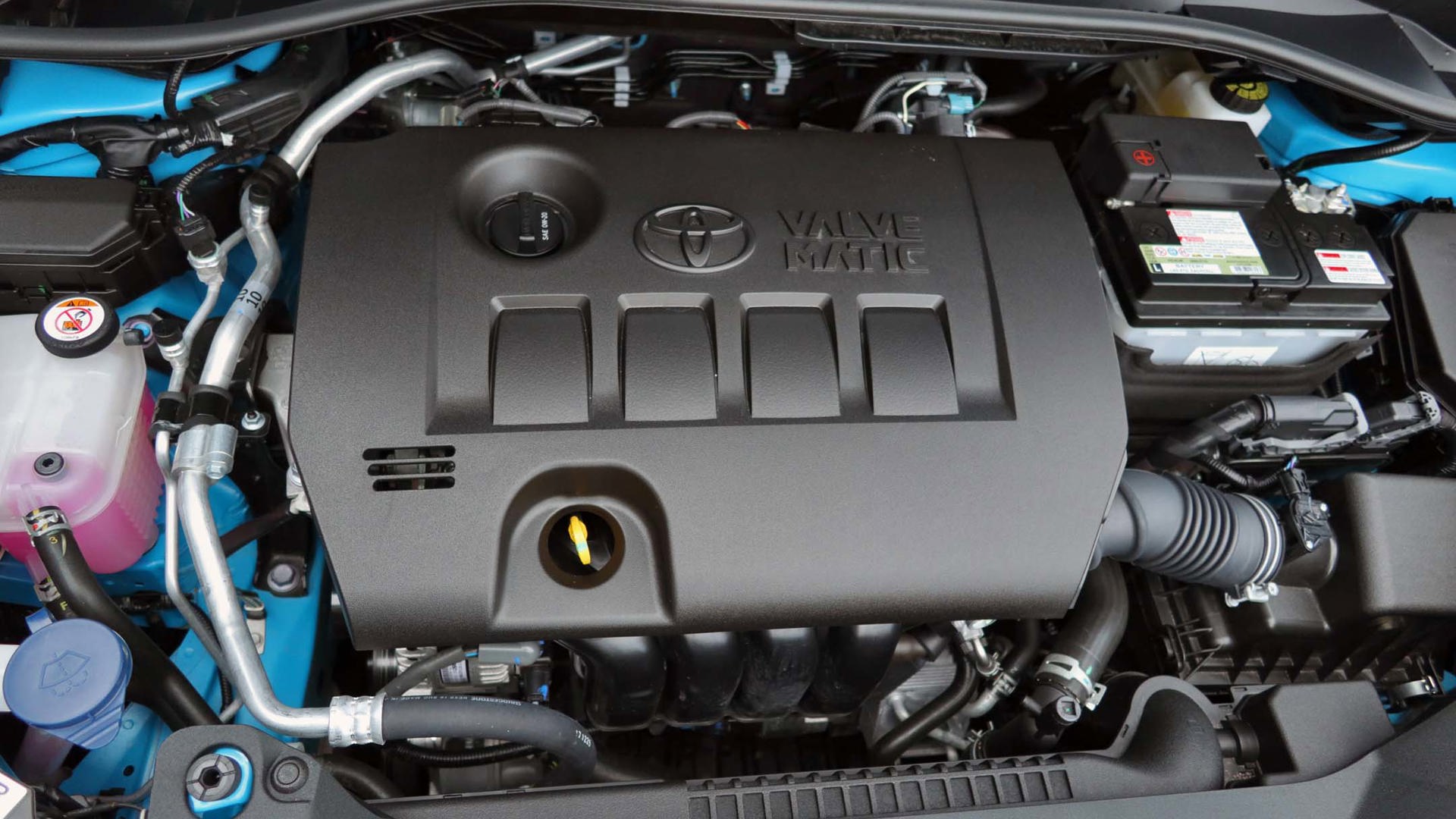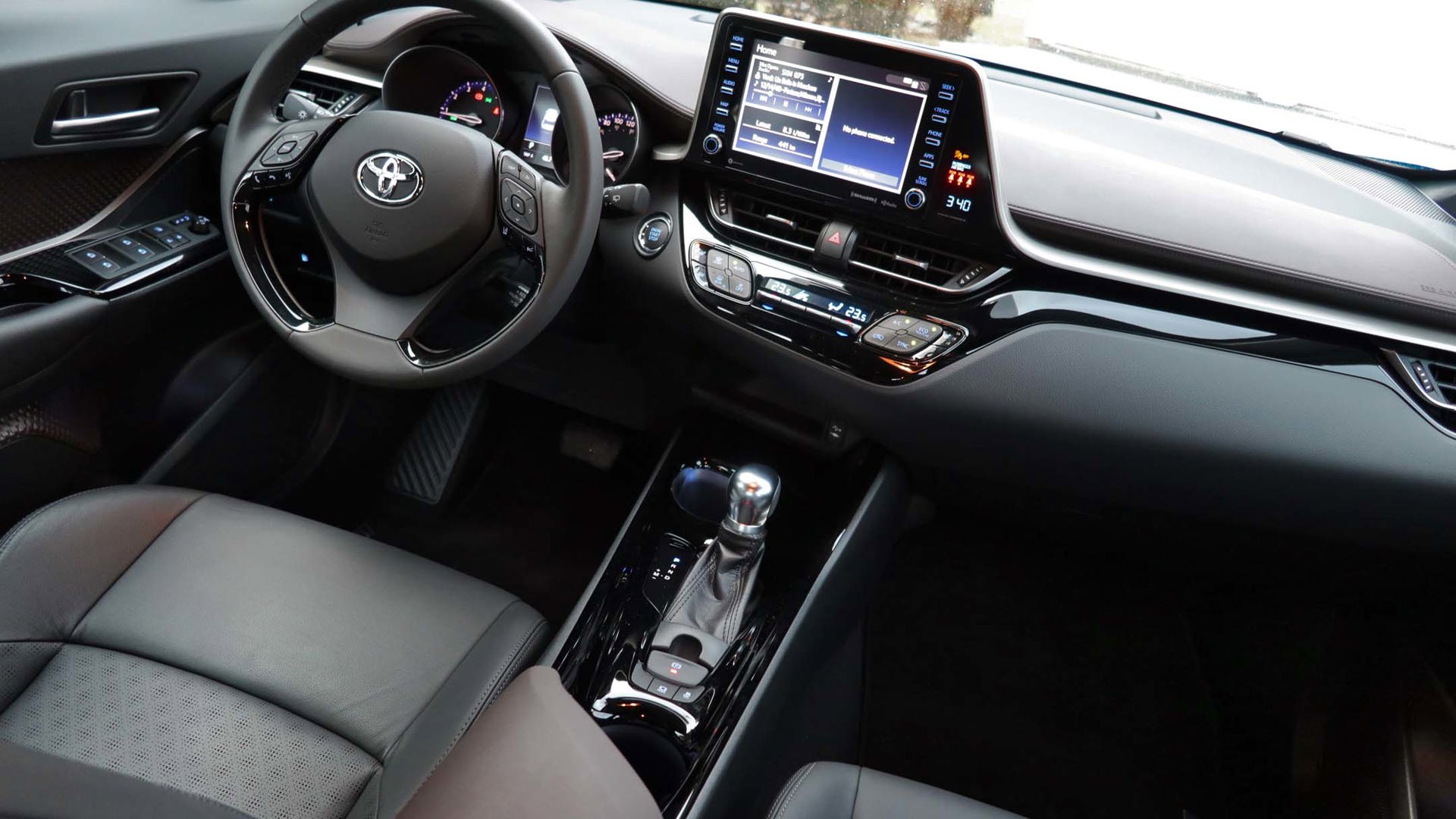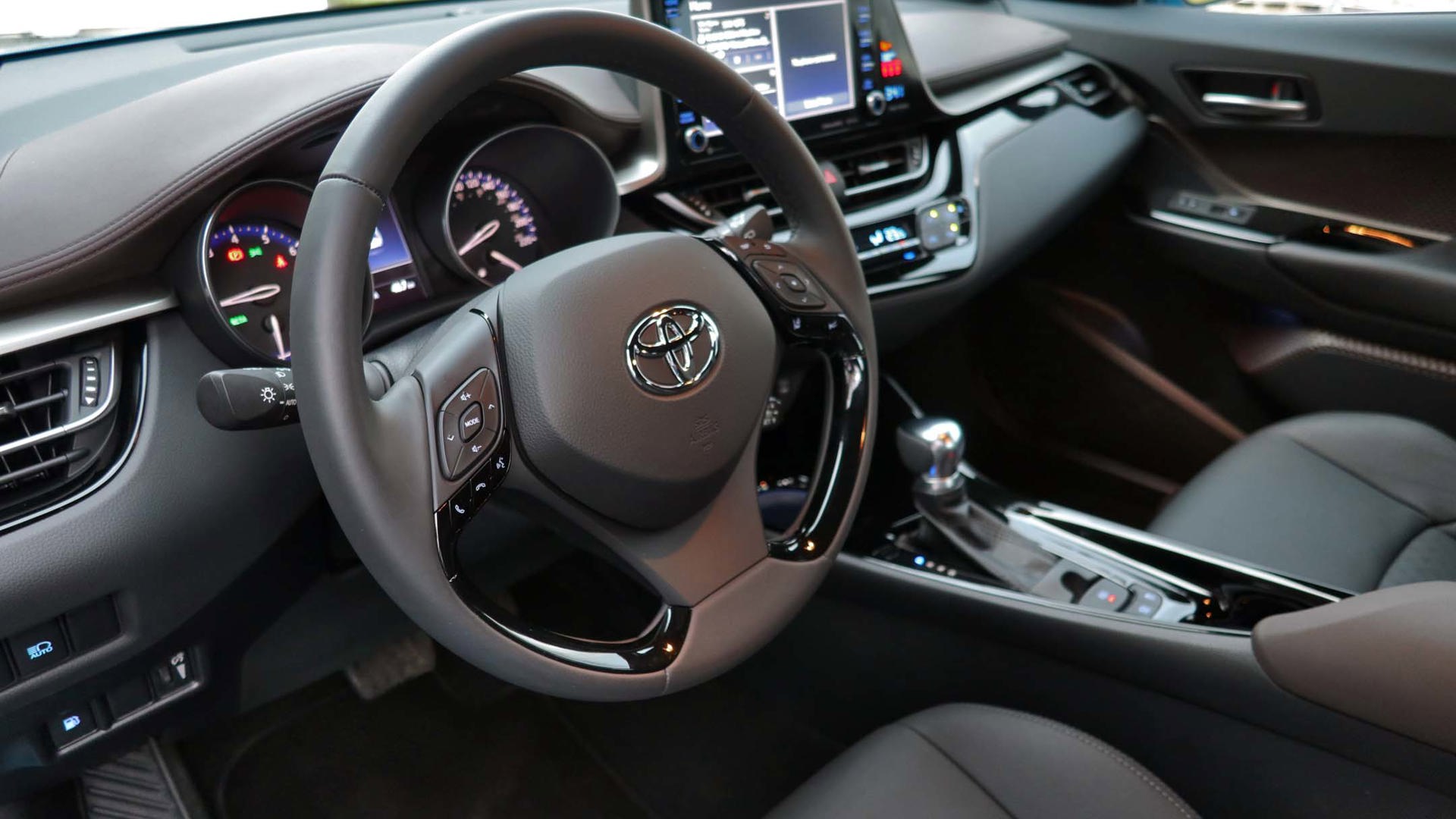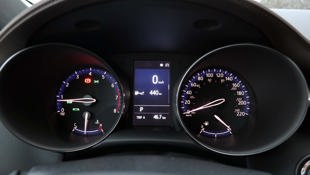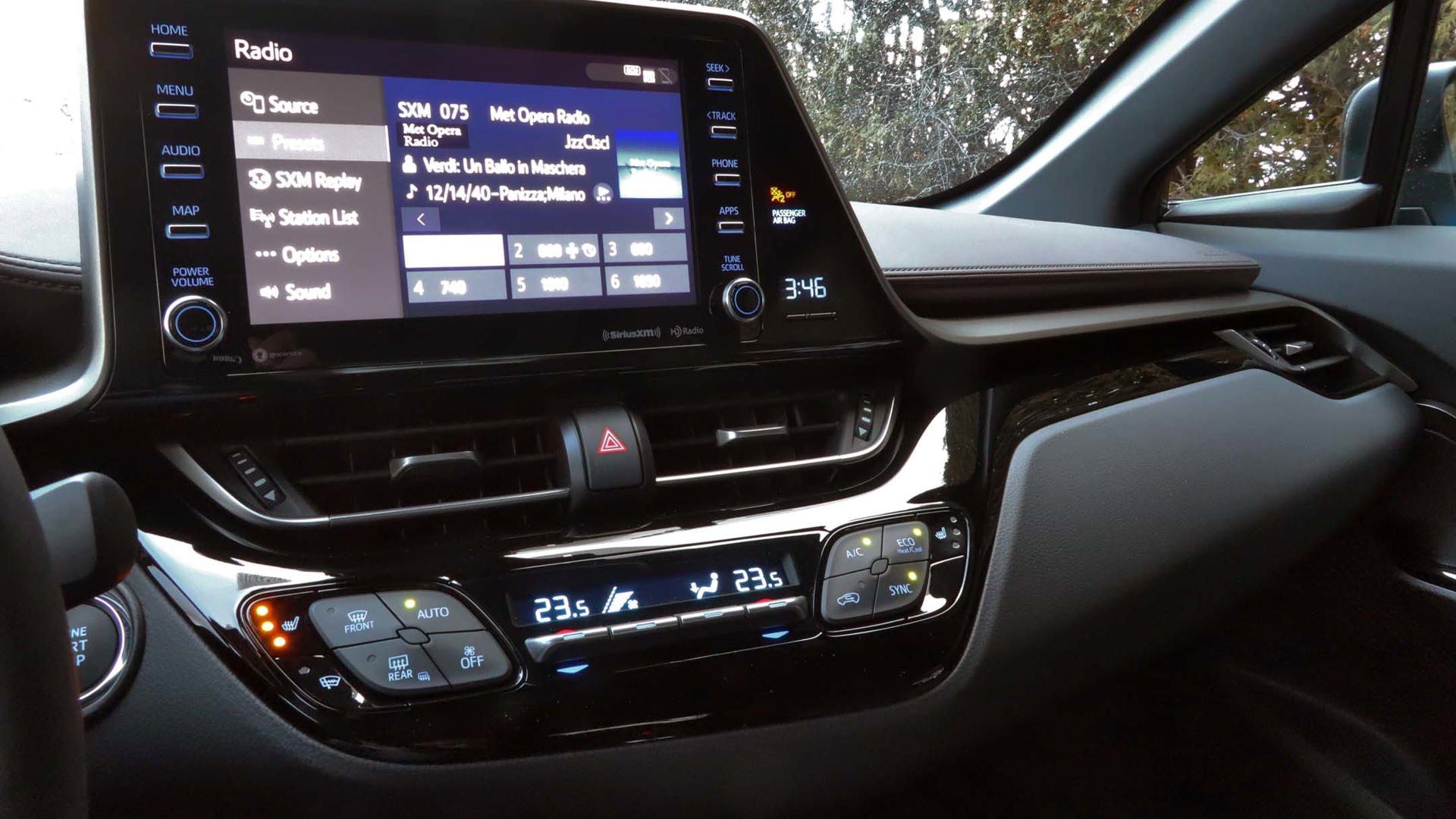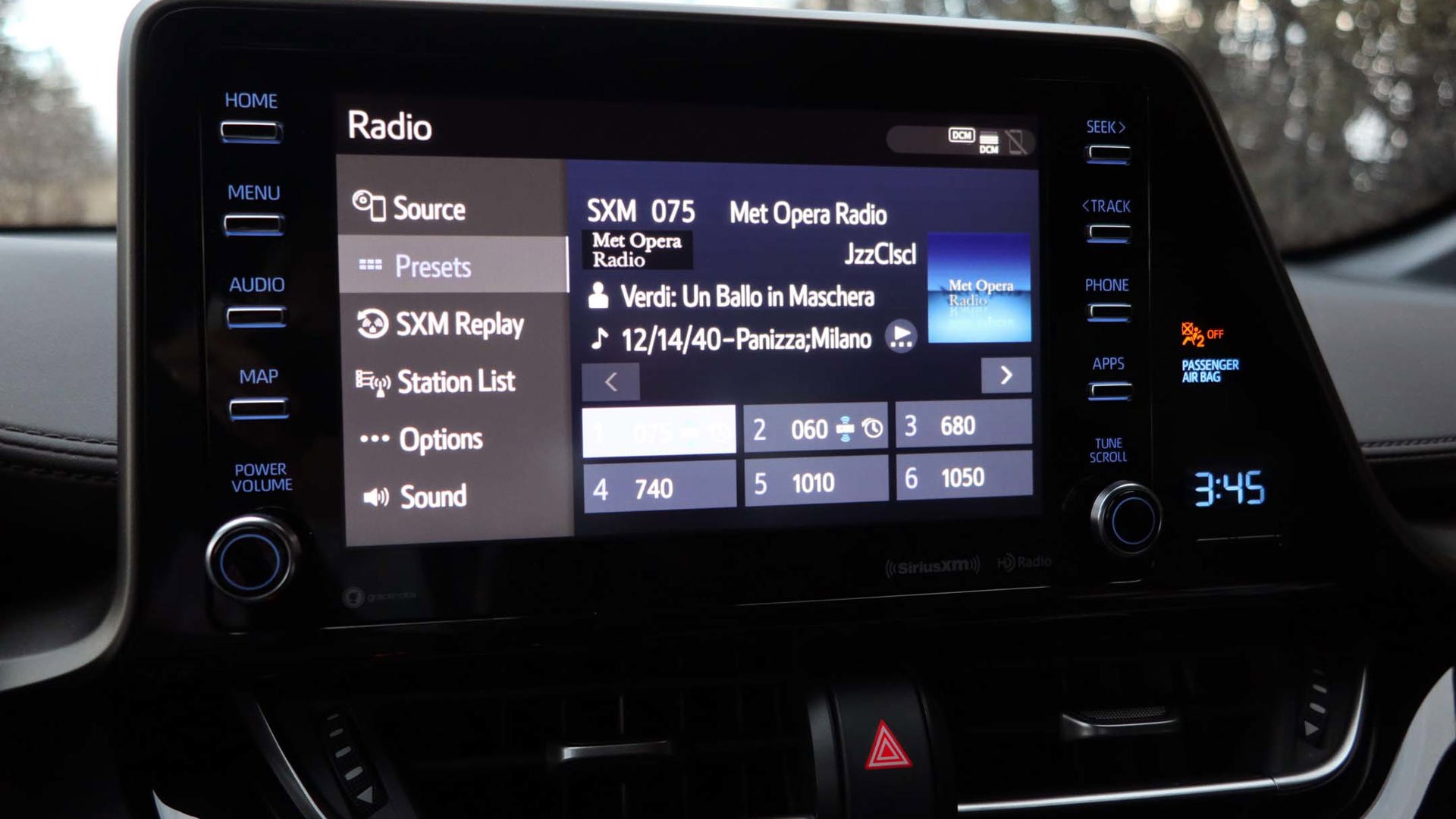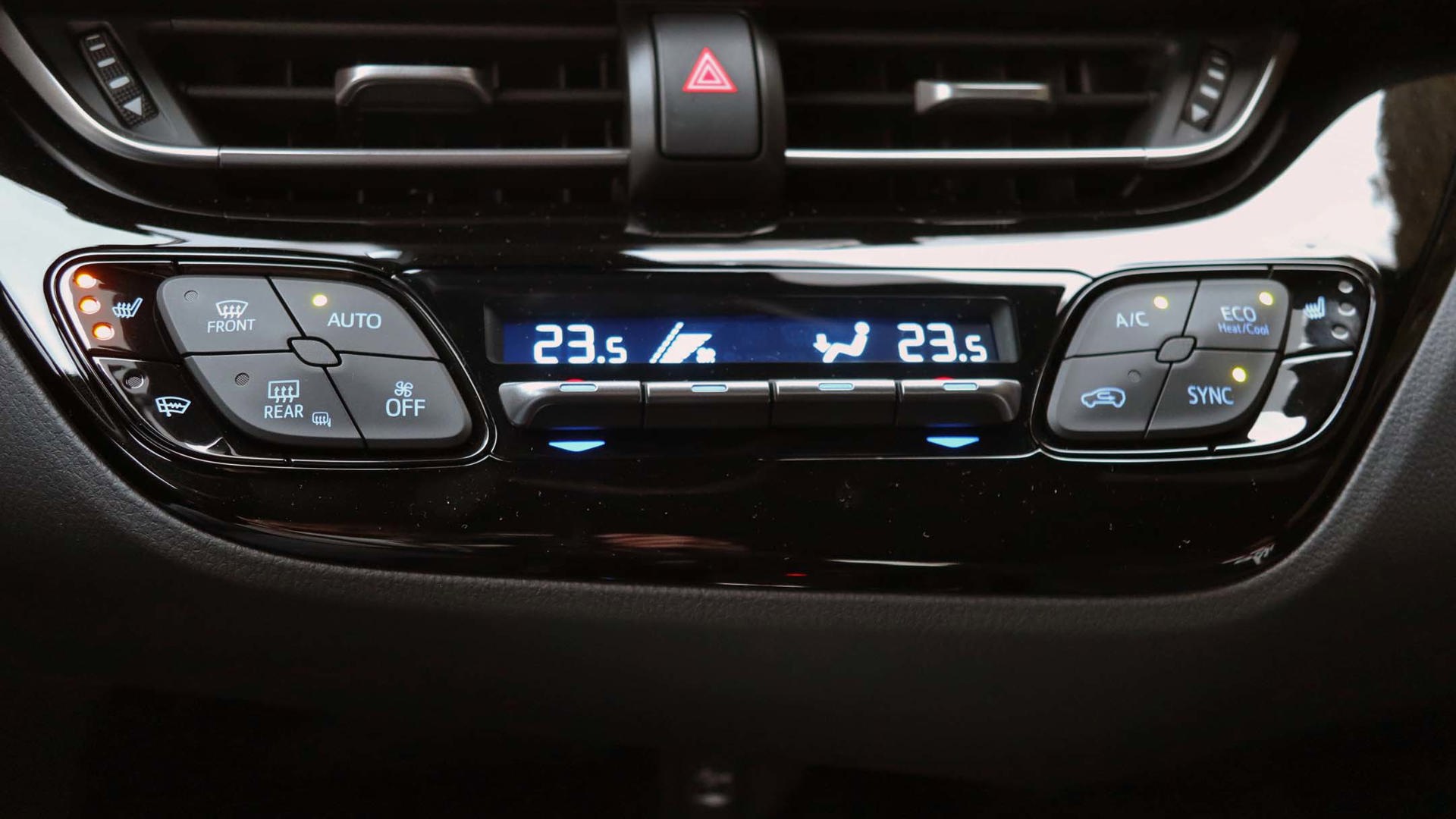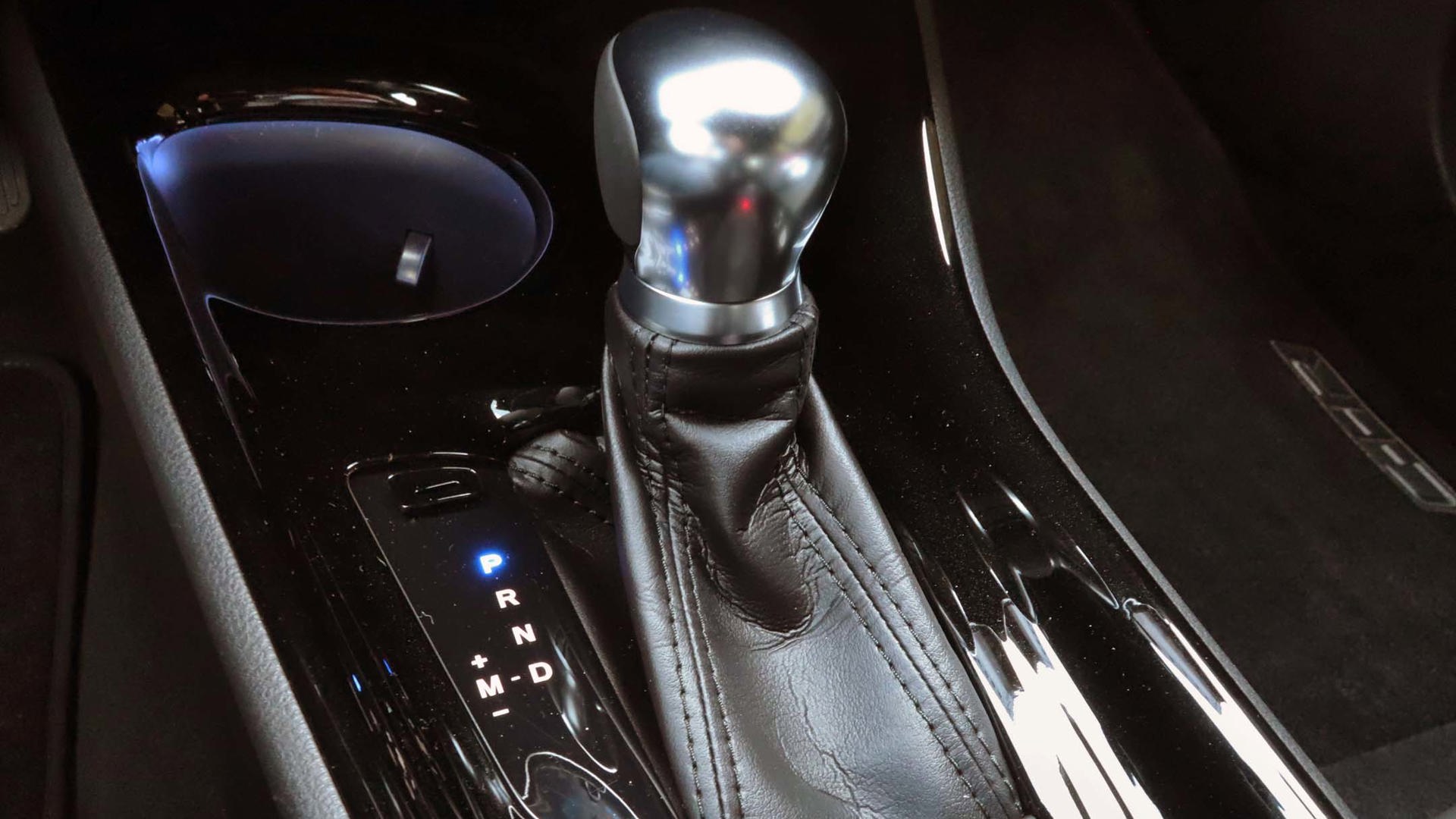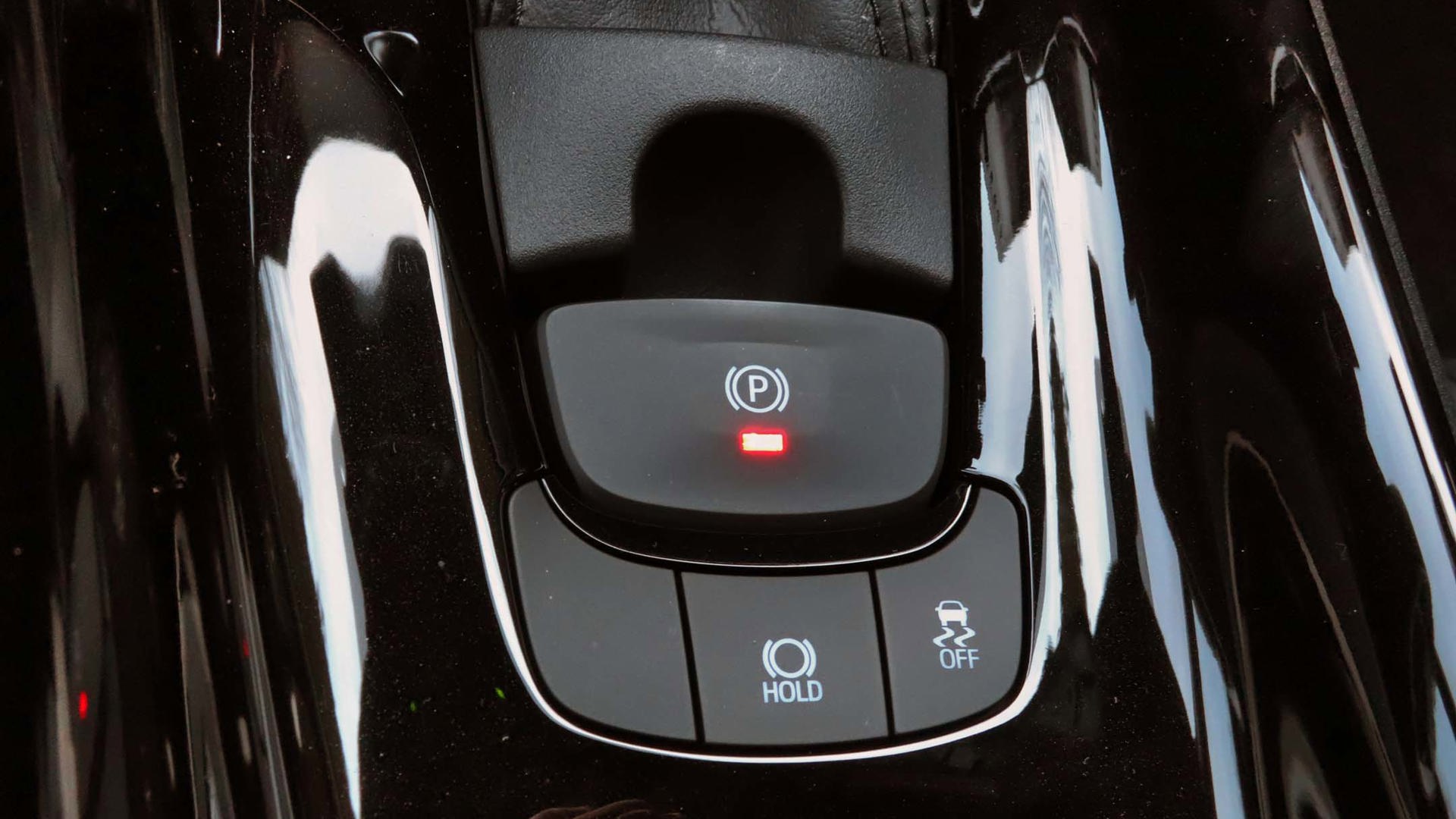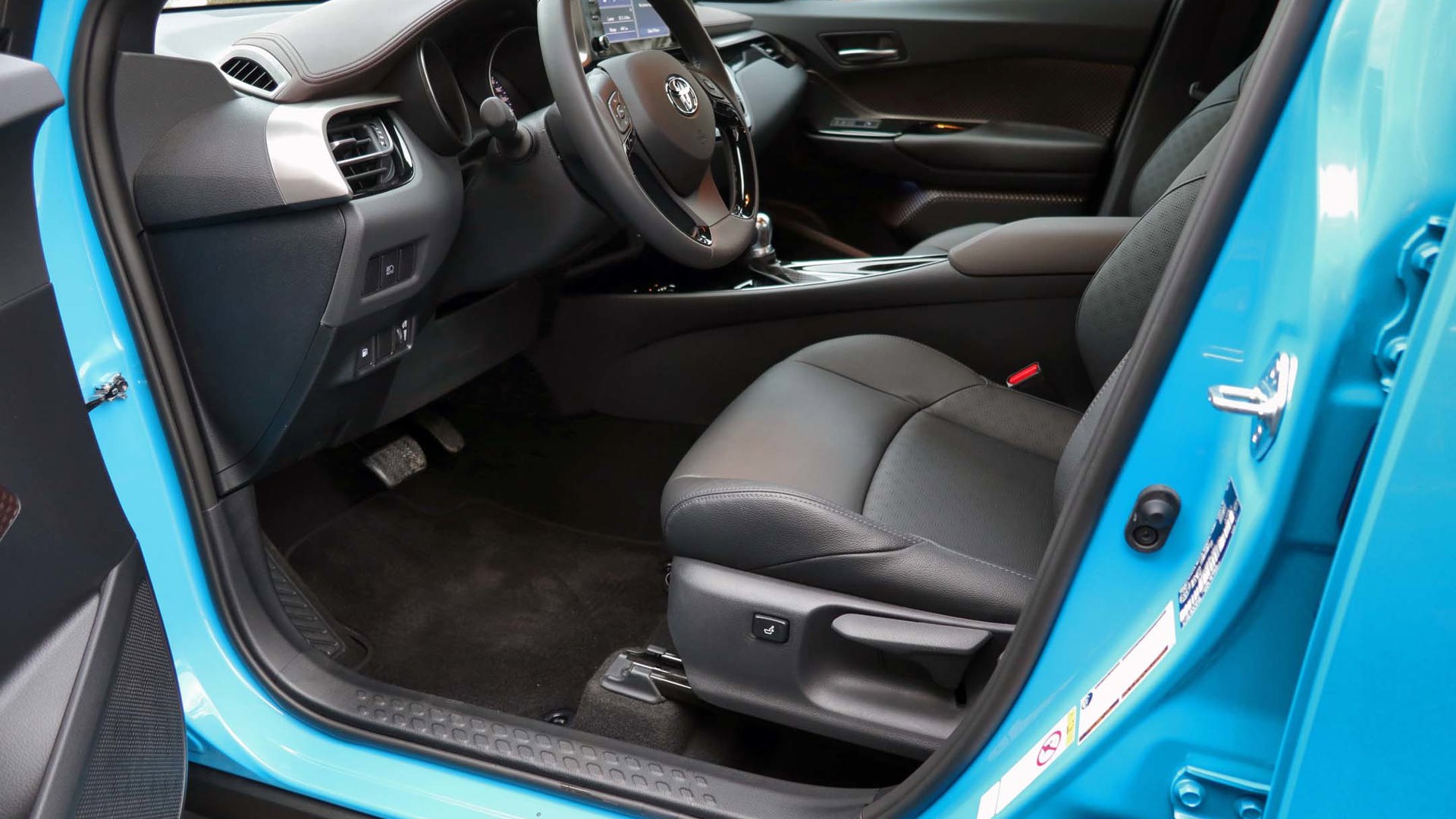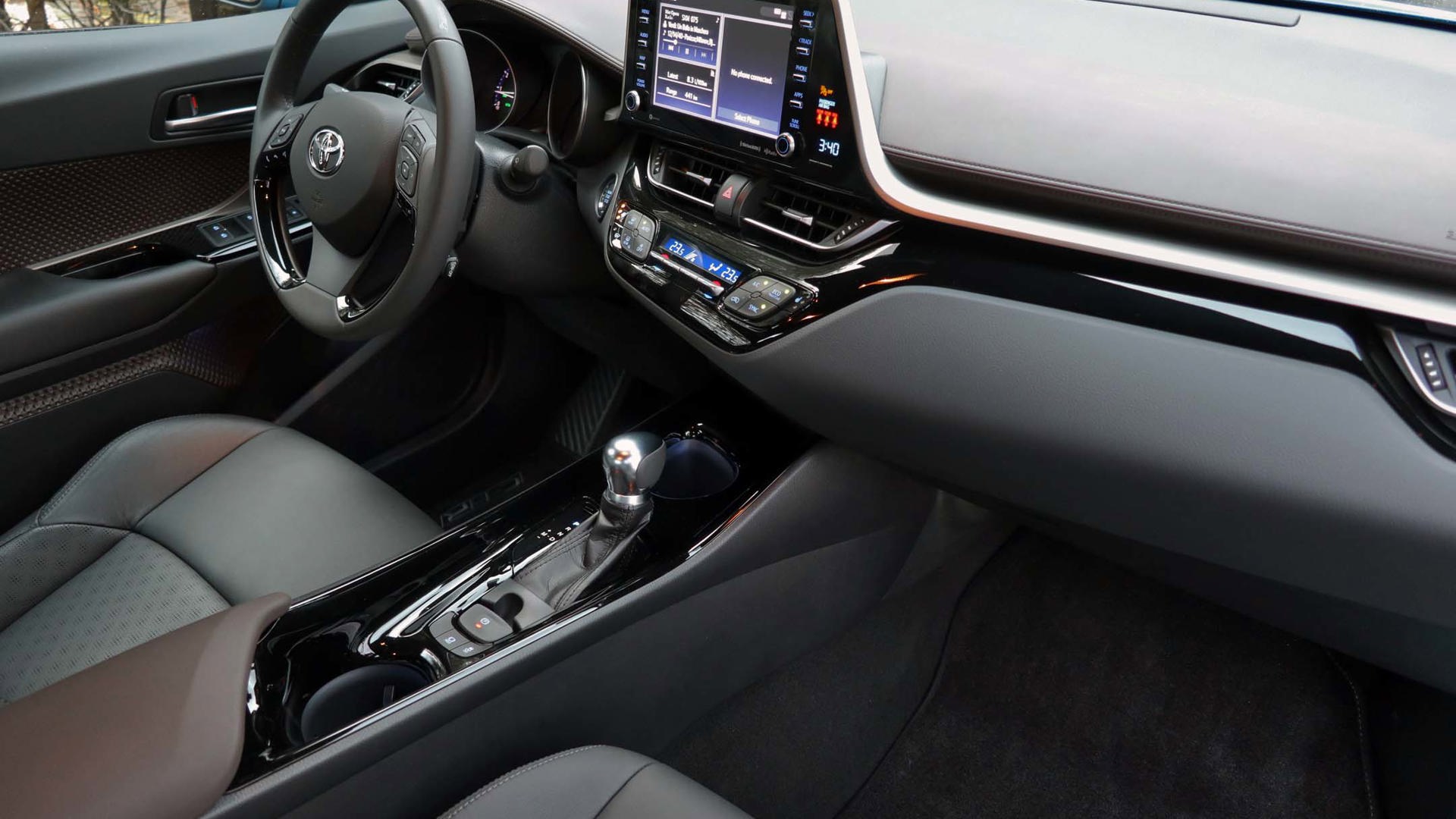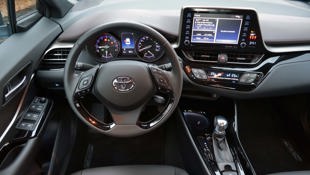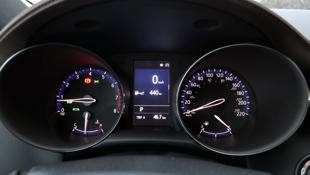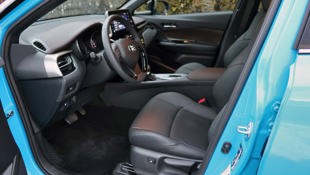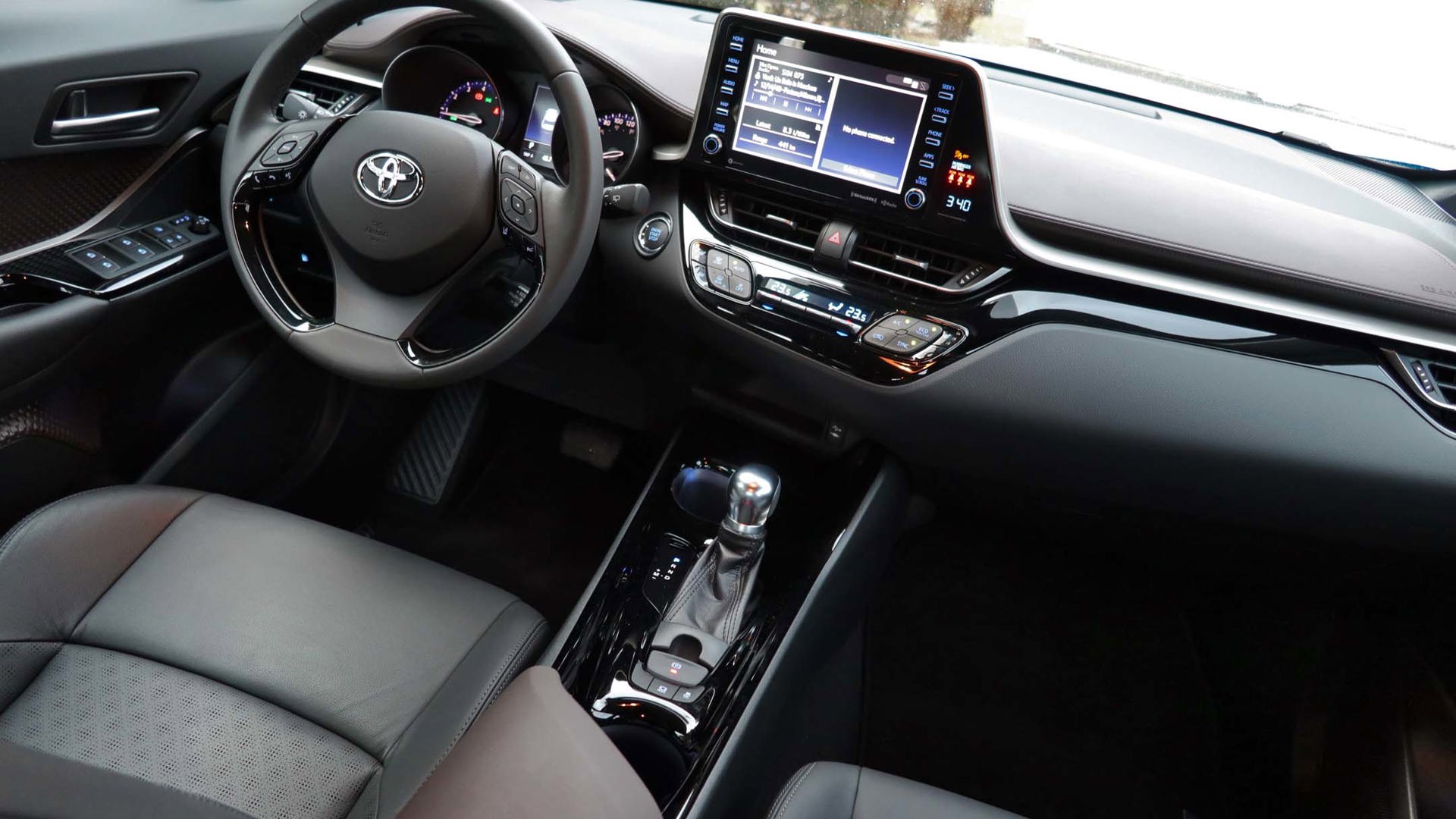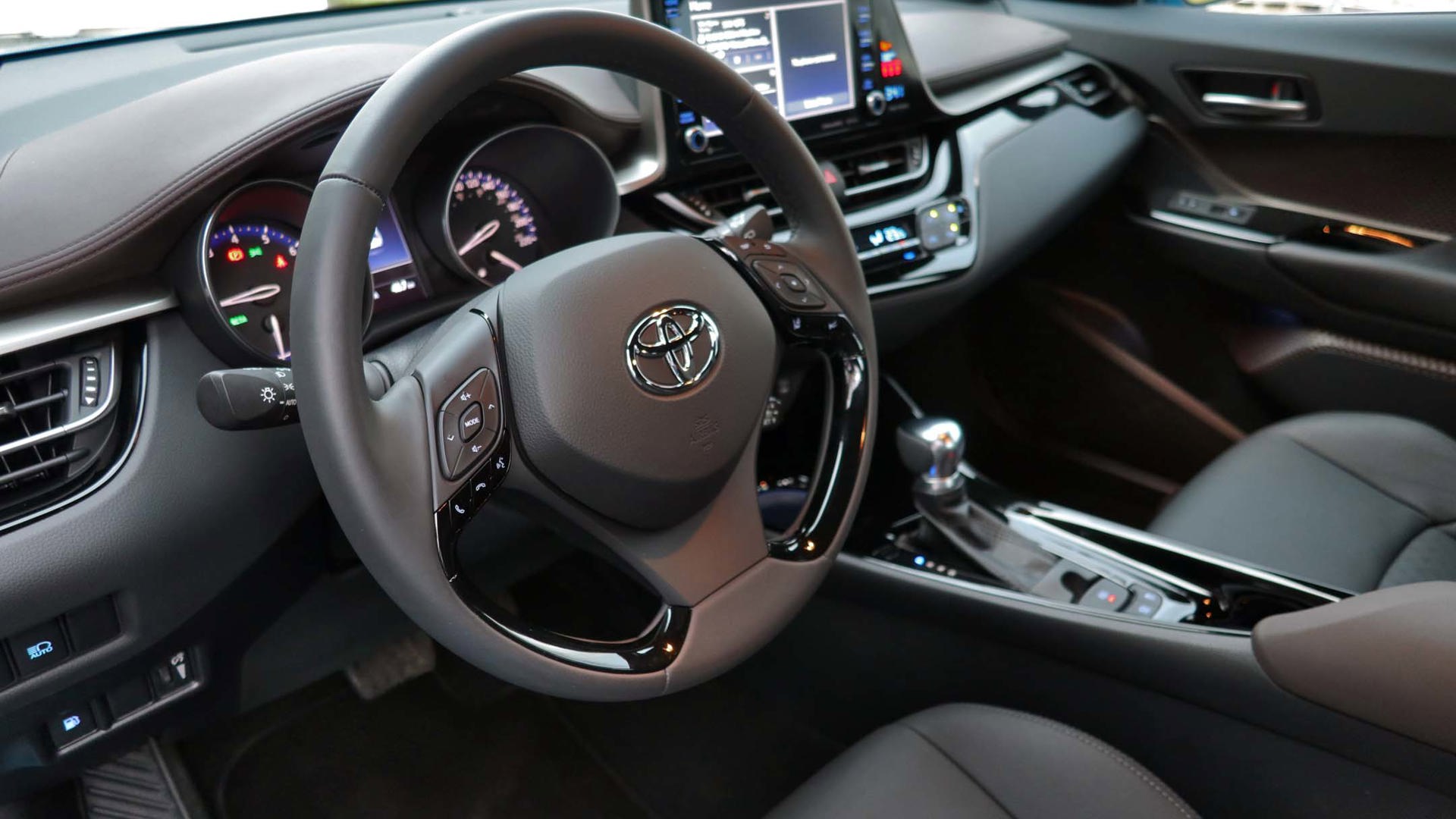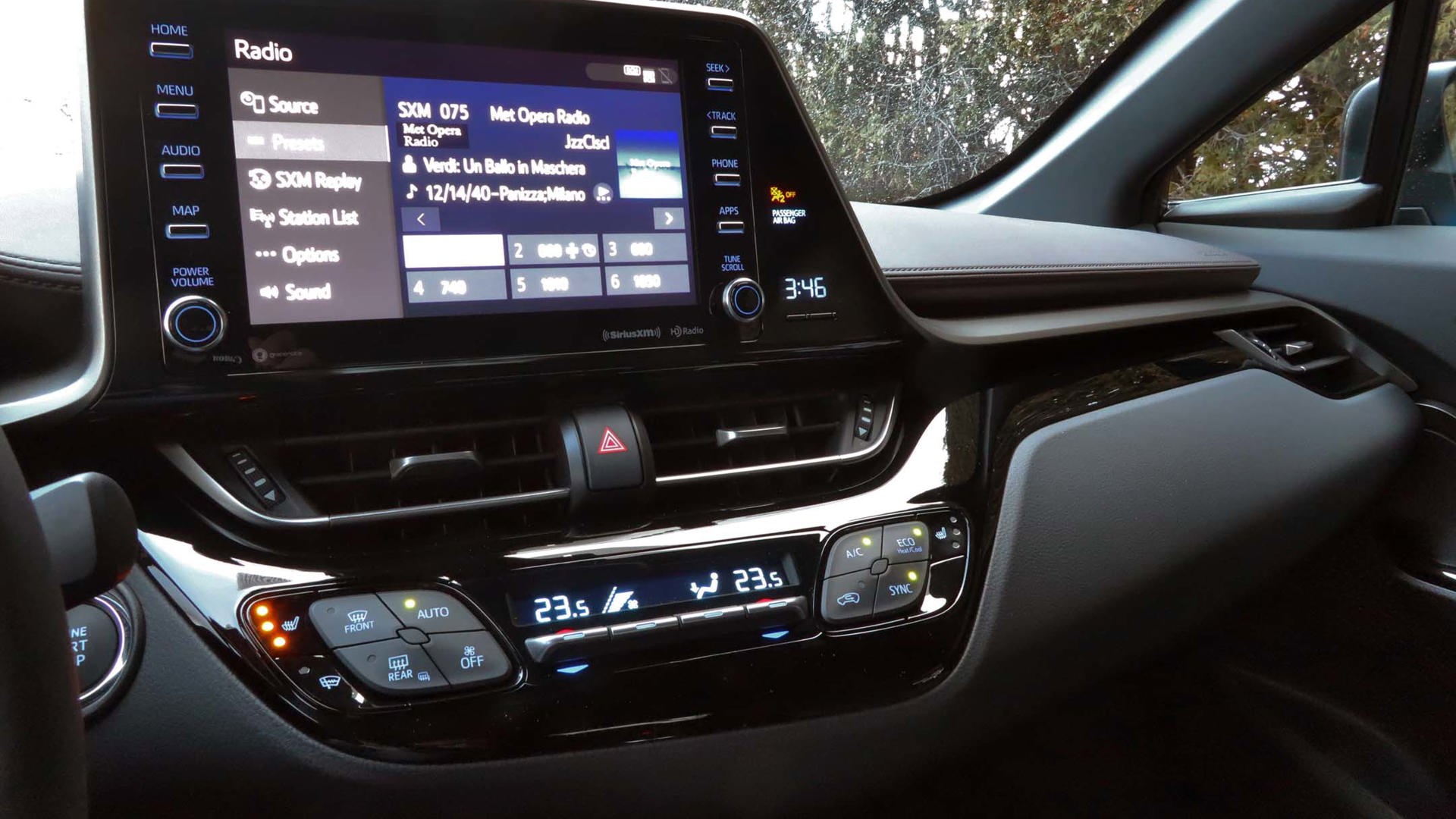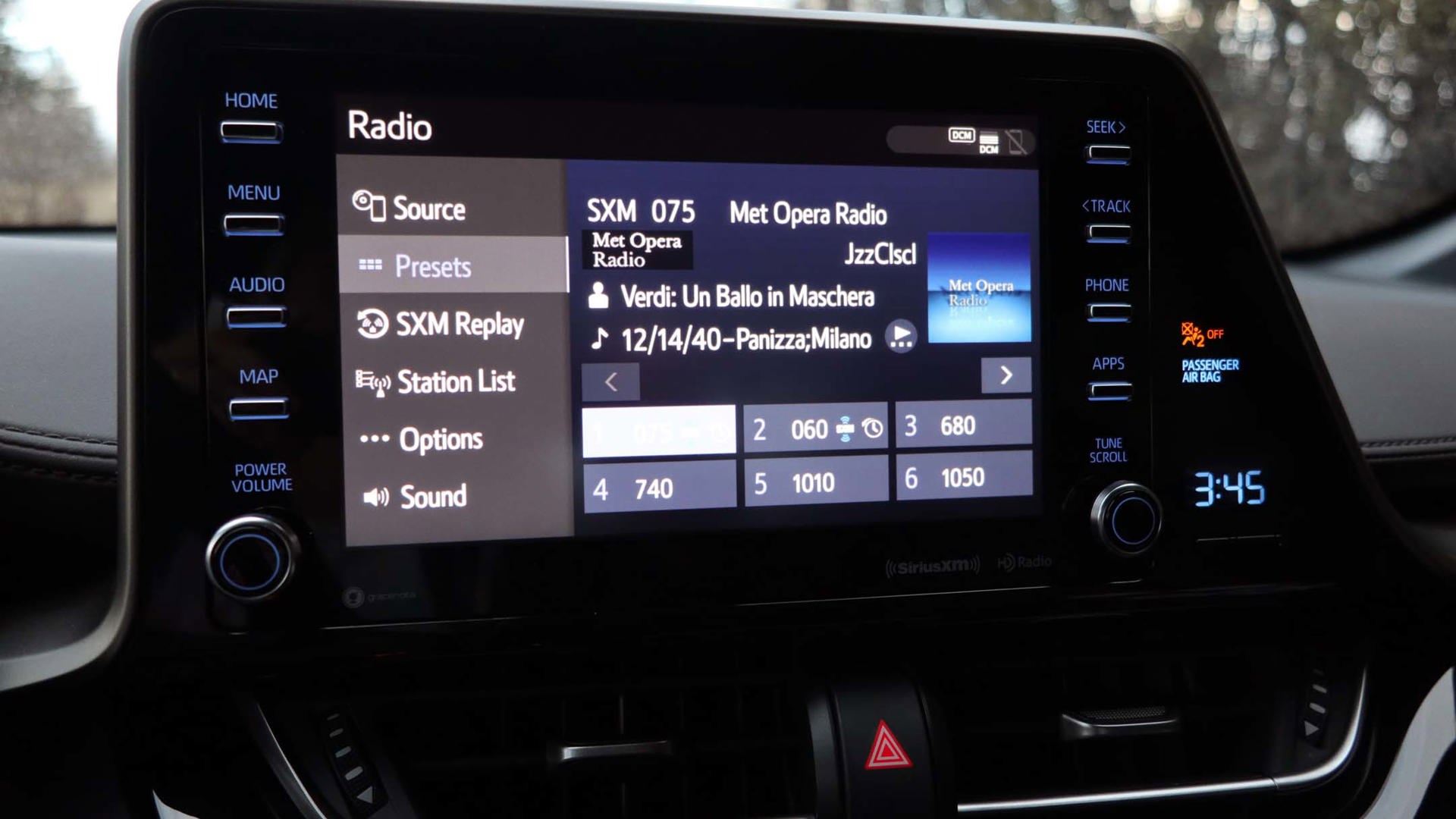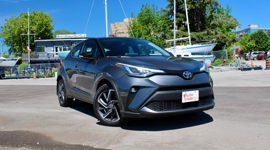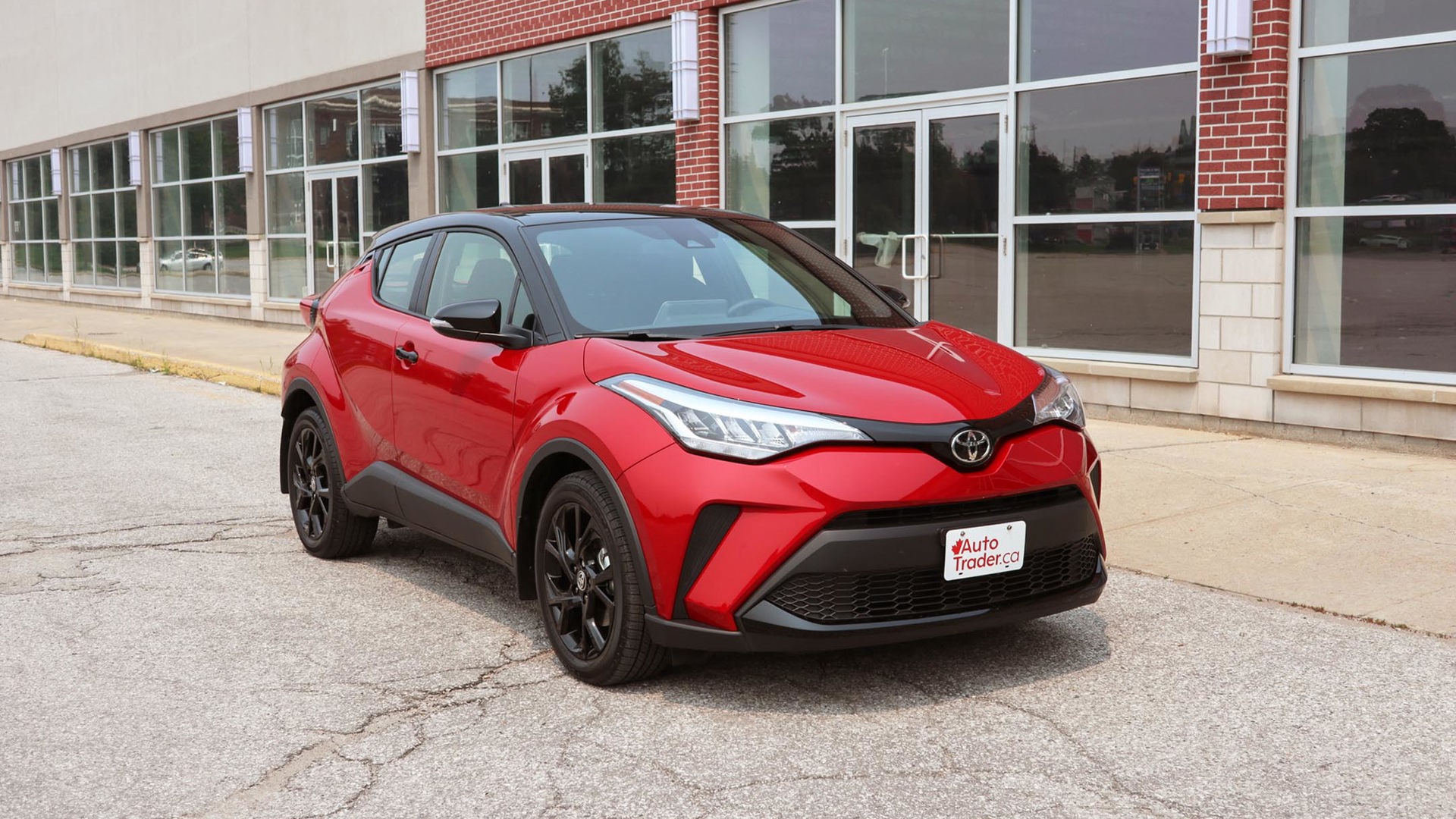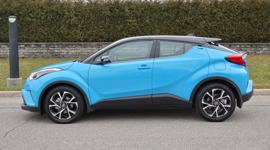 AutoTrader SCORE
AutoTrader SCORE
-
STYLING5/10
-
Safety8/10
-
PRACTICALITY7/10
-
USER-FRIENDLINESS7/10
-
FEATURES8/10
-
POWER7/10
-
COMFORT8/10
-
DRIVING FEEL8/10
-
FUEL ECONOMY9/10
-
VALUE7/10
One of the major changes in the Canadian marketplace, in the last little while, is how we look at practical “everyday” vehicles. It used to be that we bought hatchbacks; now, it’s all about crossovers that are, in effect, hatchbacks with more ground clearance.
While it has its quirks, it also has a lot going for it.
Of course, as usually happens, each crossover got a bit bigger each time it was revised. With compact crossovers now approaching what used to be mid-size proportions in days gone by, automakers have slipped a subcompact slice in under it. And that’s where my tester, the 2019 Toyota C-HR, slots in.
I don’t see it as quite the top dog in this increasingly crowded segment, where it faces such worthy competition as the Hyundai Kona, Mazda3, and Honda HR-V. But that doesn’t mean it isn’t worthy of consideration, and while it has its quirks, it also has a lot going for it.
The C-HR uses a 2.0L four-cylinder that sends out 144 horsepower and 139 lb-ft of torque, mated to an automatic continuously-variable transmission. It’s only available in front-wheel drive, and while that isn’t unique in the segment – the Nissan Kicks is configured the same way, as is the Kia Soul – it could be a strike against it with many buyers, since AWD is both a popular option in Canada and is also standard or available in just about all of its other competitors.
It starts at $23,675 and then travels through the XLE ($25,725) and XLE Premium ($27,325) trim levels before topping out at my Limited tester, which rang in at $28,775 before its two-tone black-and-blue paint scheme added a final $540 to my vehicle’s $29,315 ticket (before freight and taxes).
At the lowest end of the range, the C-HR still includes several items you’d expect on a pricier vehicle, including dual-zone automatic climate control, eight-inch touchscreen with Toyota’s Entune apps suite and Apple CarPlay (but not Android Auto), auto-dimming rearview mirror, tonneau cover, and an electronic-nanny package of adaptive cruise control, lane-departure alert with steering assist, emergency braking, and automatic high-beam headlights.
However, even though my Limited had a number of extra goodies added to it – bigger wheels, blind-spot monitoring, power-folding mirrors, heated seats, and puddle lamps that broadcast the car’s name on the ground alongside – it felt less likely of a vehicle to be tapping up that close to the thirty-grand mark (and even more so when the “Map” button wasn’t for embedded navigation as I expected, but just to take me to whatever app I might be using through my phone).
The driving experience certainly isn’t exciting – although, quite frankly, that’s usually the case in this segment – but the C-HR is more than capable for the daily commute. It handles itself quite well around corners, and it feels light and nimble. The ride is firm but not jarring, and while the engine and transmission can rumble a bit on hard acceleration, it all smooths out and the cabin is quiet once you get up to speed. It’s a fuel-sipper, too: in cold-weather driving I averaged 8.6 L/100 km, just a tiny tick up from the vehicle’s published combined rate of 8.2 L/100 km.
As far as both looks and passenger comfort go, I’ve always thought the C-HR was designed by two unrelated teams, who started at the B-pillar and each worked their way out to the front or rear. For the record, the team that went to the nose did the better job. Styling is subjective, of course, but I see the front end as edgy and cool, and the rear as just plain weird, and not helped by the bulging taillights (which, when viewed straight-on with the hatch panel between them, look like they were transplanted straight off a Honda Civic) and the open concept of the rear spoiler that looks like a ladder turned sideways.
Equally, the C-HR’s front seats are roomy and surprisingly supportive and comfortable, even on longer drives, while the flat-cushioned rear chairs provide considerably less in the way of legroom. Ideally, the C-HR’s primary customers will be singles/couples, or those with small children who are going to hit their teenage growth spurts after the C-HR has been traded out of the family for something bigger.
The dramatic upsweep of the side profile reduces the size of the rear windows, and as a result, gives the rear seat even more of a claustrophobic feel. Throw in the steeply pitched rear glass, and the driver’s visibility suffers. Even opening the back doors could be easier: their handles are high up on the C-pillar, where those of child-size stature will have difficulty reaching them.
The trade-off for lack of legroom is a fairly generous cargo compartment, given the C-HR’s small footprint. I took my neighbours to the airport in it and we put in three decently sized suitcases back there, two of them full-size and well over the carry-on dimensions. If necessary, the rear seats fold down for longer items.
The cabin design is simple but looks good, with the tablet-style centre screen seamlessly integrated into the dash rather than looking like it was just glued on afterwards. The climate controls are easy to use, and the screen combines a touch panel with rows of quick-access hard buttons.
The driving aids are equally easy to operate, and I was impressed with the adaptive cruise control as I made my way up a particularly packed section of Toronto’s Don Valley Parking Lot – er, Parkway – highway. My vehicle obediently followed the vehicle in front, coming to a complete stop when it did. Once the car ahead moved, I just had to tap the throttle or the lever, and I was on my way again. While these systems should never be a substitute for paying attention, I did find the whole stuck-in-traffic thing easier to take when I wasn’t constantly on the throttle and then immediately back on the brake.
When sport-utes are this small, no matter who makes them, there are some compromises and you’ll have to figure out which ones you can accept. Some in this segment have more rear space, some are more powerful, some offer a few more features, but each will have their cons alongside their pros. Give this one a thorough looking-over when you’re shopping. For everything the C-HR could do better, there are lots of places where it shines, and it could be just the ticket for a lot of buyers.
| Engine Displacement | 2.0L |
|---|---|
| Engine Cylinders | I4 |
| Peak Horsepower | 144 hp @ 6,100 rpm |
| Peak Torque | 139 lb-ft @ 3,800 rpm |
| Fuel Economy | 8.7/7.5/8.2 L/100 km city/hwy/cmb |
| Cargo Space | 538 / 1,031 L seats down |
| Model Tested | 2019 Toyota C-HR Limited |
| Base Price | $28,775 |
| A/C Tax | $100 |
| Destination Fee | $1,815 |
| Price as Tested | $31,230 |
|
Optional Equipment
$540 – Two-tone paint $540
|
|
